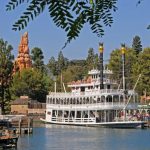Compared to airplanes, self-driving, and cruises, train travel is quite niche. Only those who are truly romantic at heart will appreciate train journeys. A train ticket represents a journey, whether it’s for travel or returning home.
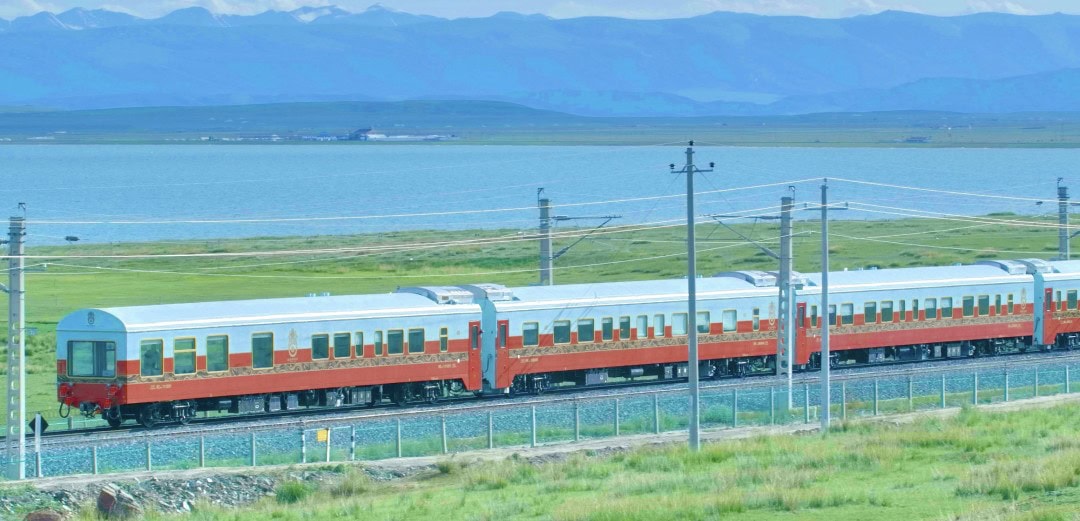
Yes, I took the train again. Ever since my trip on the Hohhot Express last year, I’ve completely fallen in love with train travel. The article about last year’s Hohhot Express reflects a golden age of train travel, and that era is still alive!
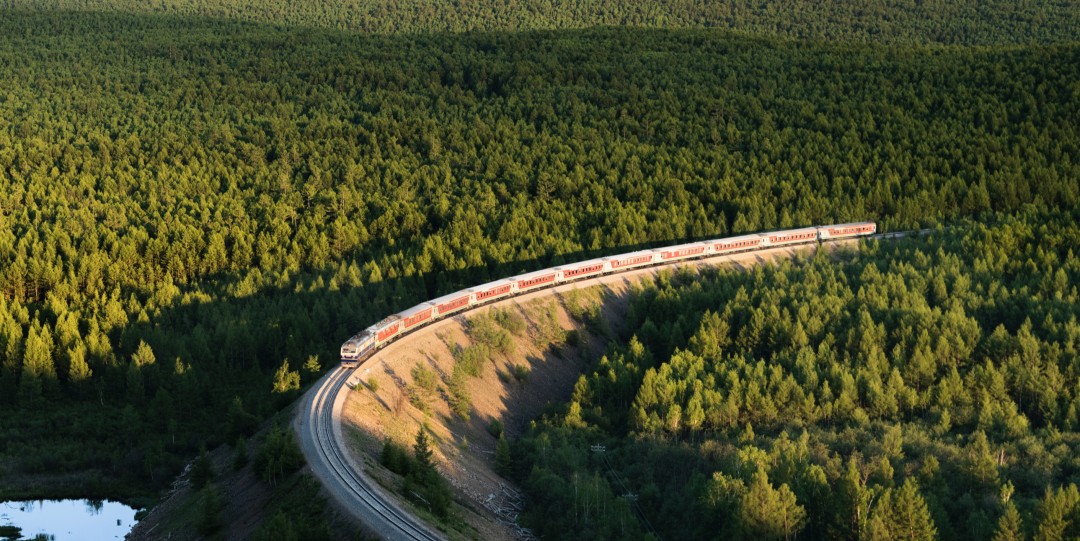
This time, I took another train under the Star Enjoy Iron Travel brand — the “Silk Road Dream Train,” traveling from Dunhuang to Xining. Typically, it only takes about 6 hours to travel from Dunhuang to Xining by high-speed train, but our train journey took a leisurely 5 days and 4 nights. Slow travel is a sentiment. Without the clamor of the bustling city and the crowds of people, slowing down transforms the entire journey into a better experience.
Today’s article is a report on my trip from Dunhuang to Xining on the “Silk Road Dream Train.”
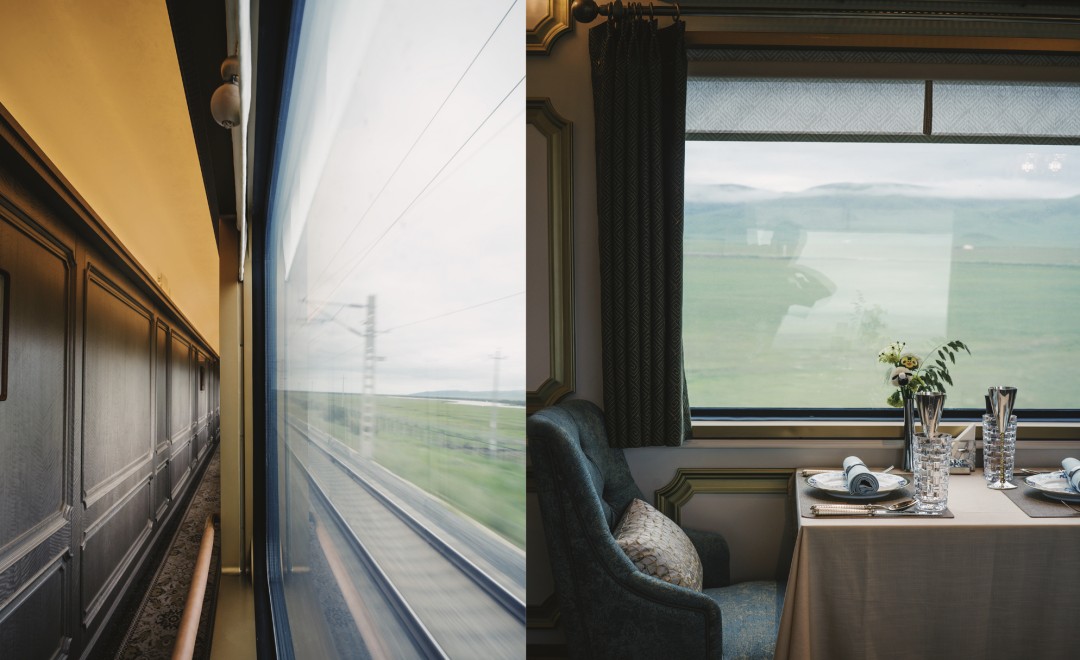
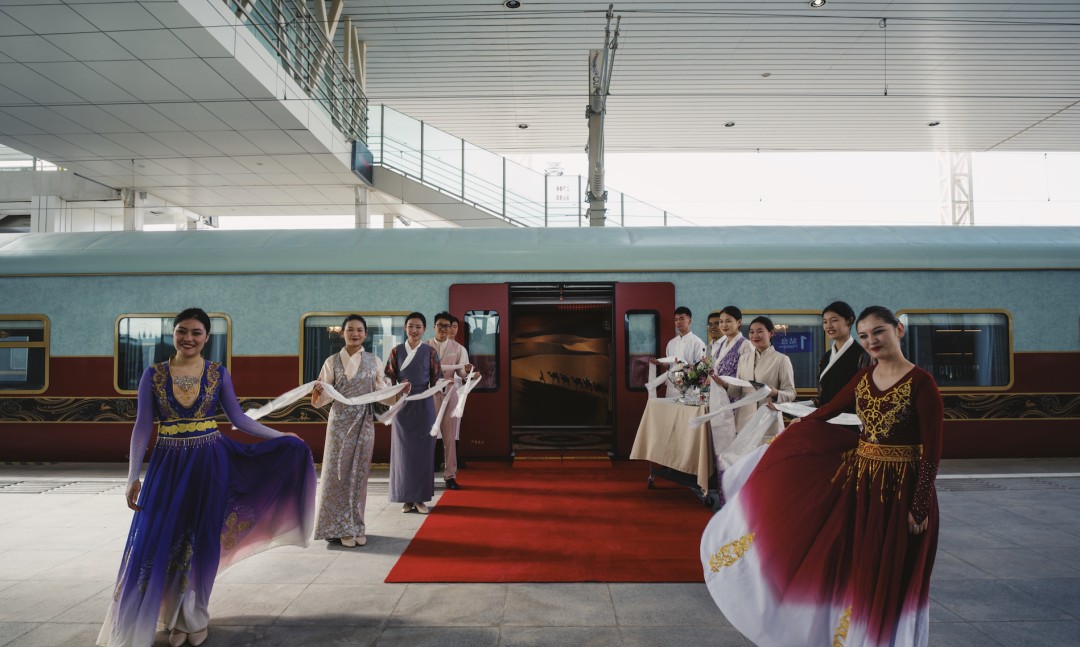
A quality train journey mainly comprises three aspects: the onboard experience, the beautiful views outside the window, and the people and events encountered along the way. My train trip has perfectly satisfied all three aspects, and I will elaborate on each of them in detail.
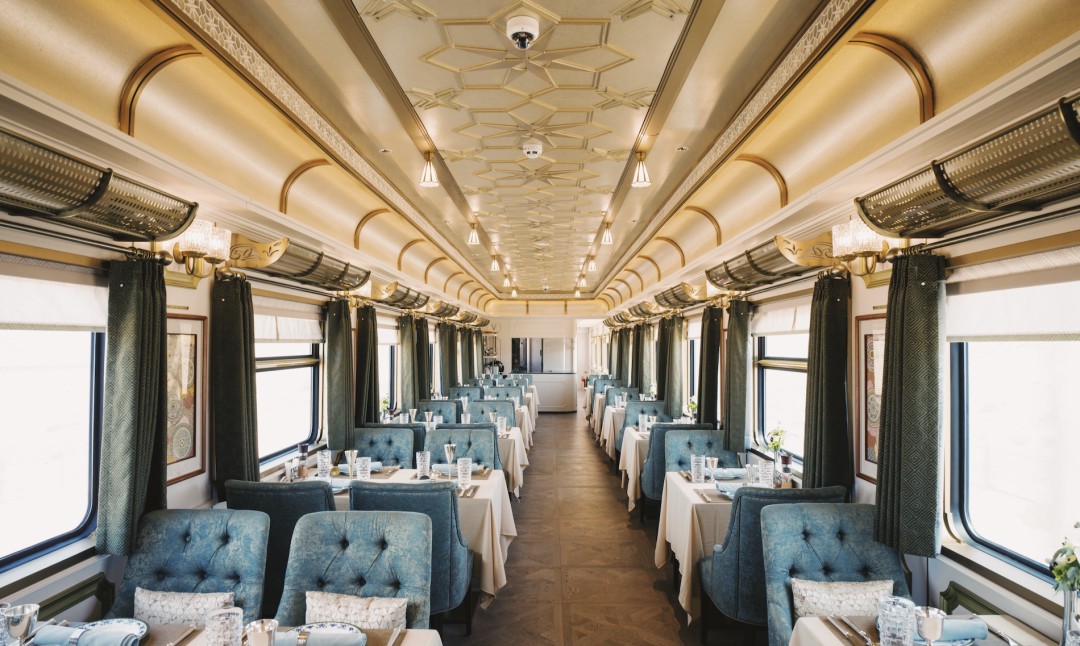
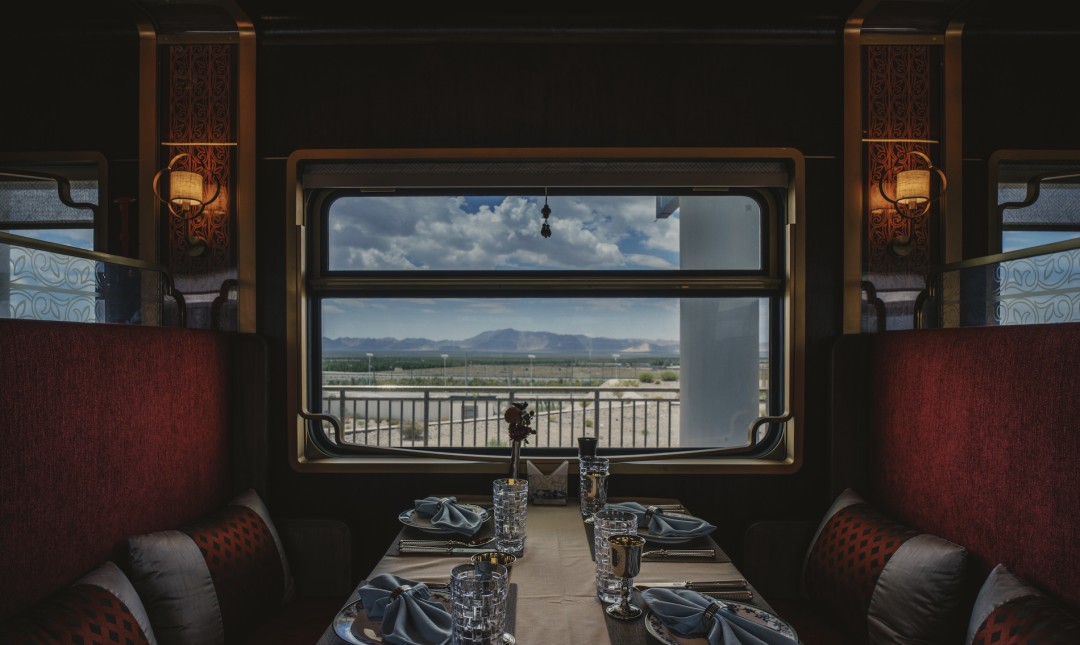
Onboard Experience
Currently, there are several themed train journeys in China, including the Silk Road Dream Train, Hohhot Express, Forest City Train, Kongtong Train, New Oriental Train – Silk Road, New Oriental Train, Panda Train – Comfort, and Panda Train – Shifang. I can confidently say that the Silk Road Dream Train is the hardware pinnacle and the top travel train in the country. I stand by this statement, and anyone who disagrees is welcome to argue with me.
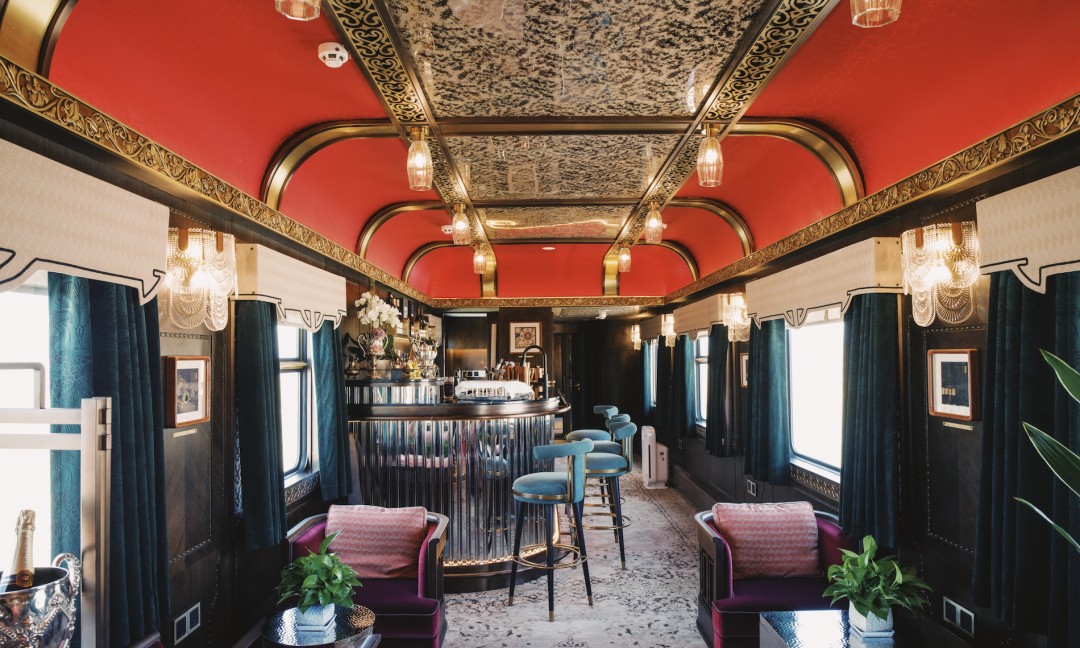
Even when looking internationally, the Silk Road Dream Train can compete with the likes of the African Pride, Orient Express, South America’s Belmond, Australia’s The Ghan, and Japan’s Seven Stars Kyushu train. Particularly in terms of hardware, it holds its ground firmly. As a train enthusiast, I have researched these trains in detail, so I’m well-informed about their specifications.
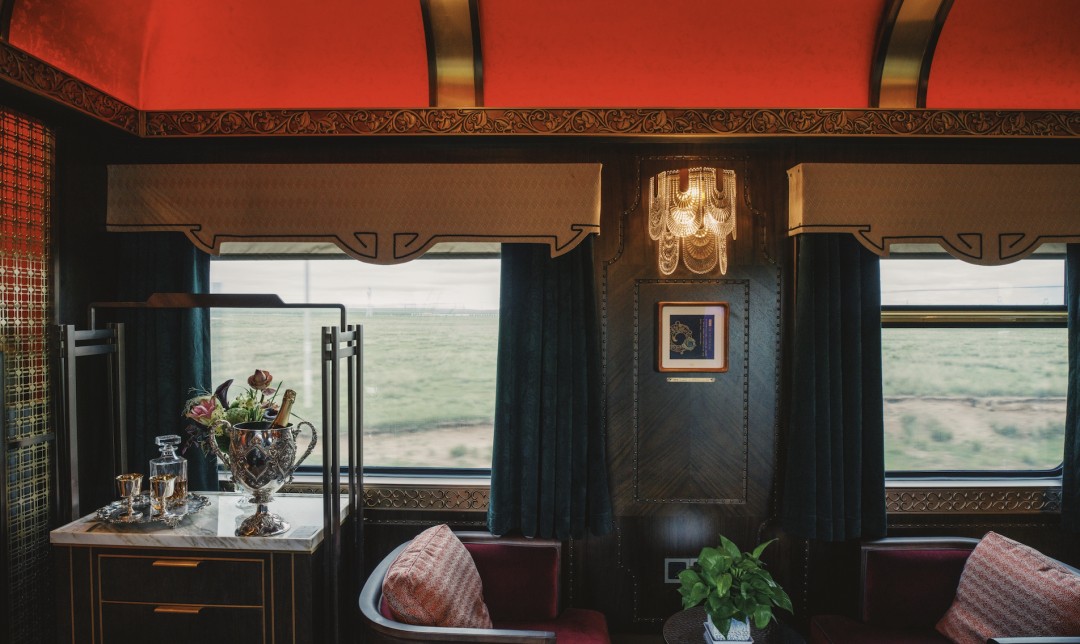
Creating the Silk Road Dream Train was no easy feat; it took a full five years from concept to reality. The train’s exterior was designed by the Academy of Arts & Design at Tsinghua University, with the exterior’s depictions of birds and animals hand-painted by students and staff from the same institution.
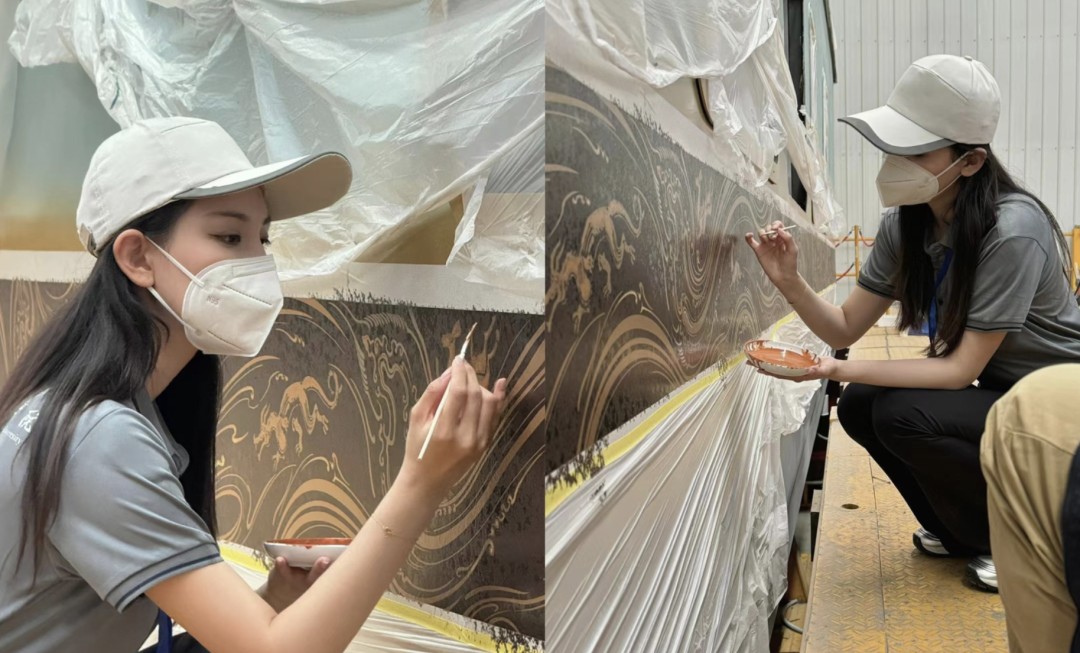
The physical presentation of the train is stunning and aptly aligns with the theme of the Silk Road.
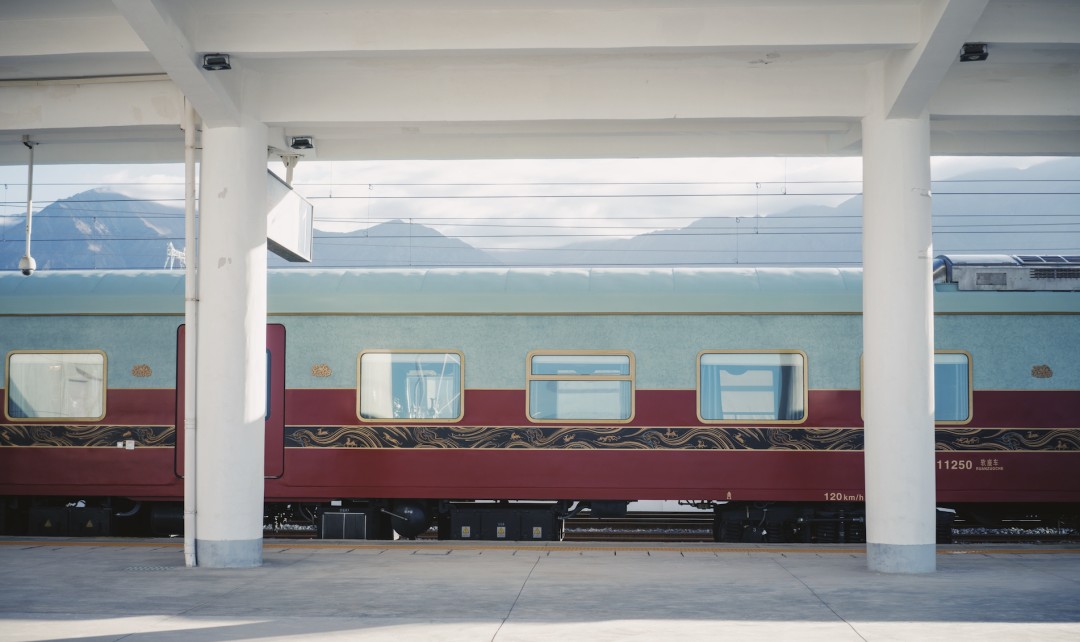
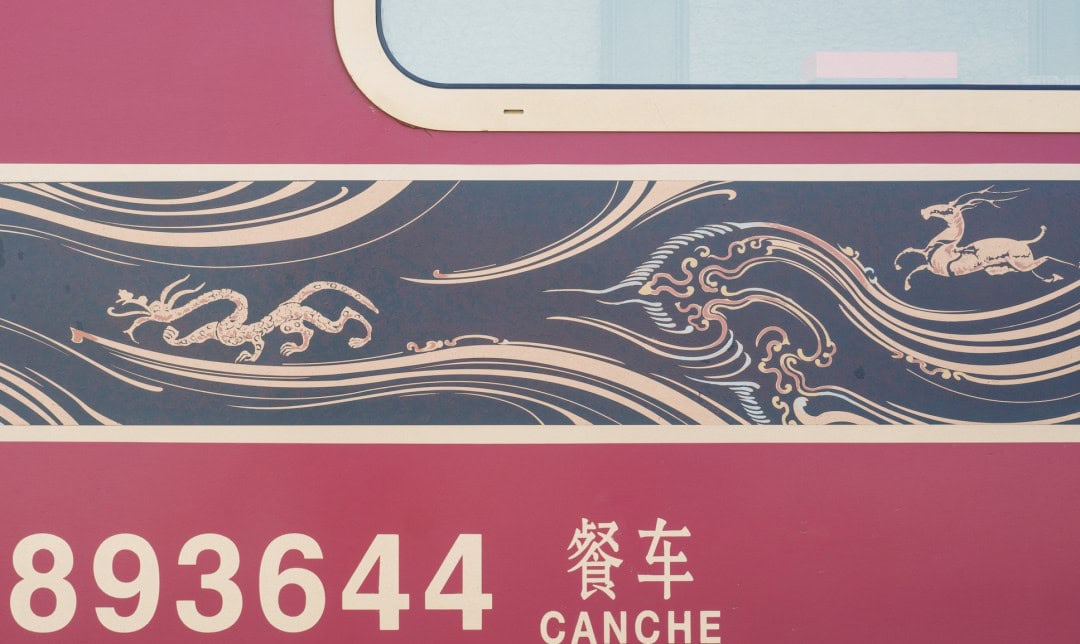
The train was designed by the globally renowned design firm HBA and decorated by CRRC Qingdao Sifang, showcasing a wealth of traditional luxury. The interior incorporates elements of the Silk Road and Han Dynasty, combining the mystique and classical charm of Eastern culture with Western sensibilities, resulting in an atmosphere rich in quality, warmth, and artistic flair.
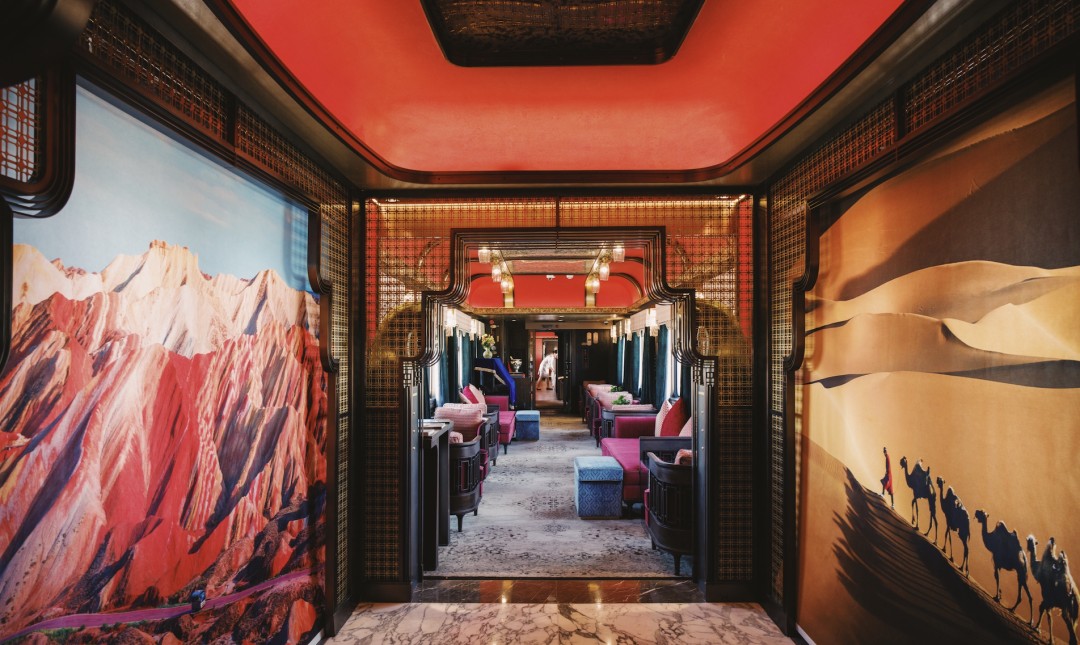
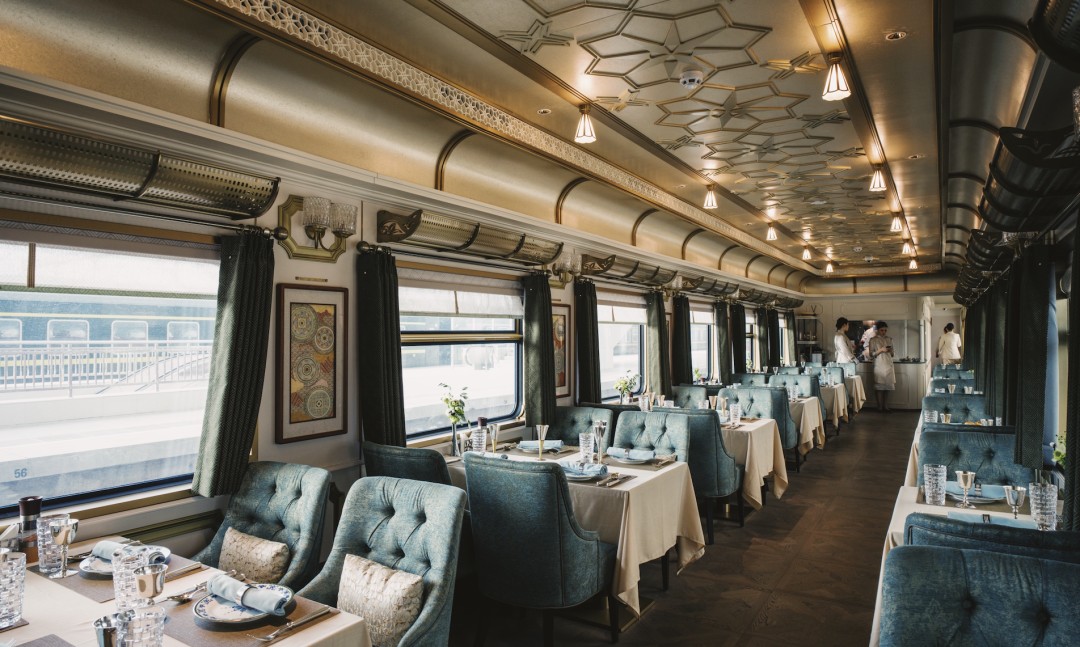
There are many artworks and antique treasures onboard; you can stumble upon these artistic gems at any moment.
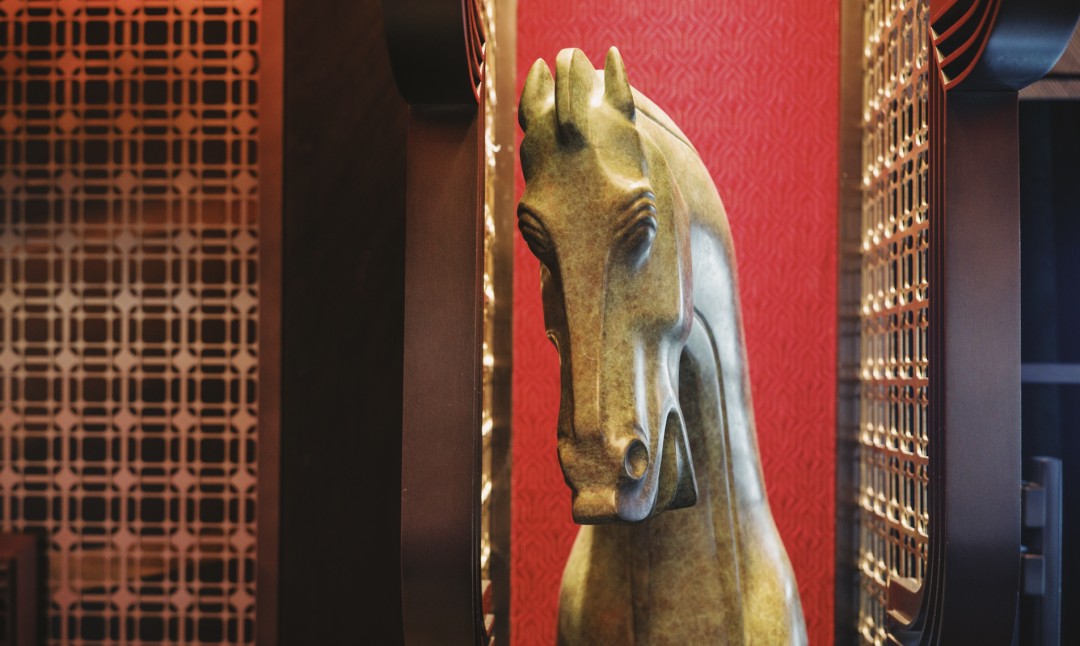
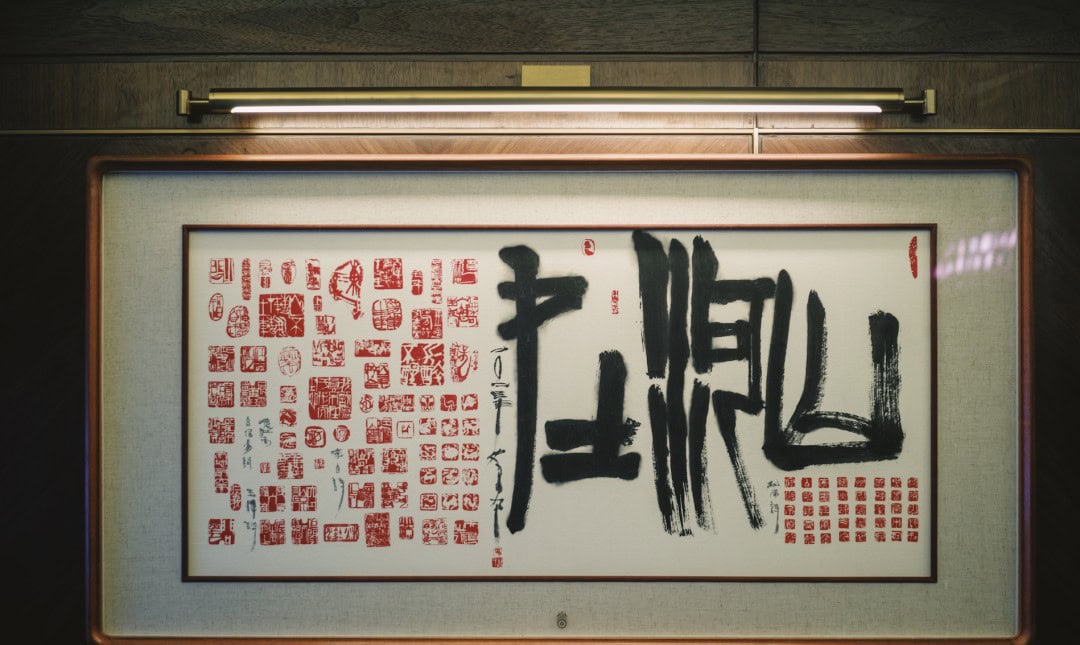
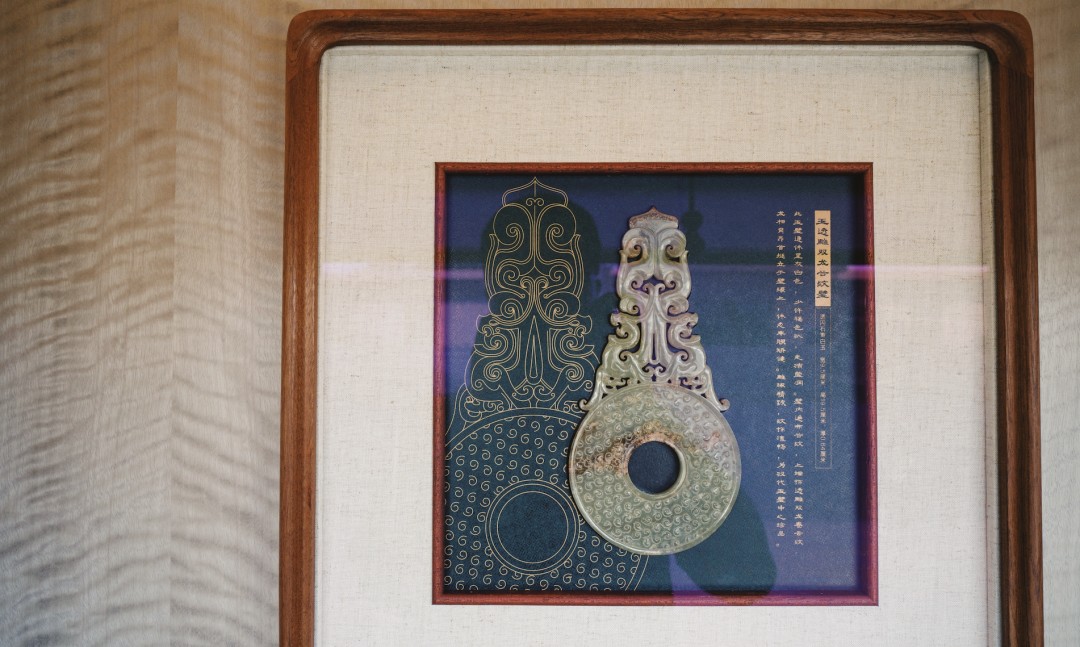
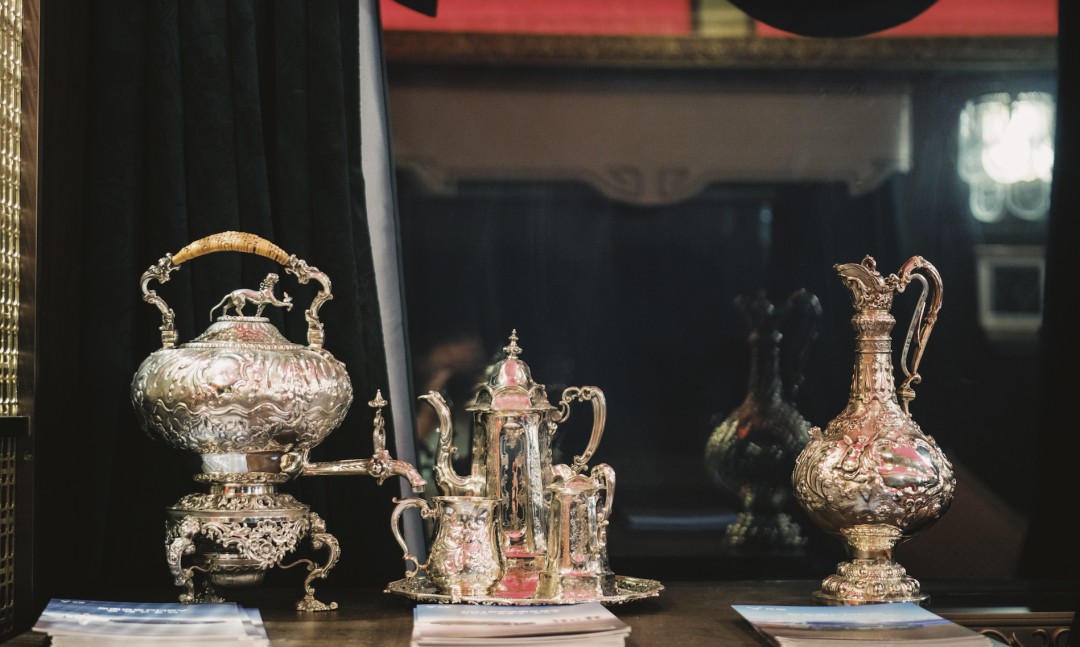
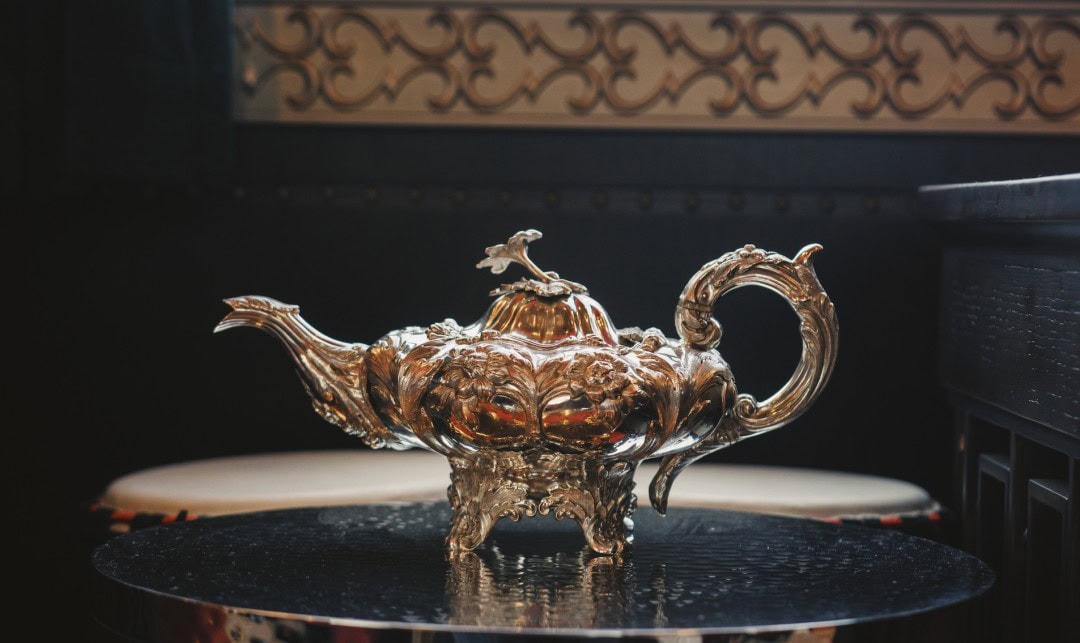
Especially in the lounge car, every item, including the British antique silverware, has its era marked, with some dating back to the 18xx.
I stayed in the Jinxiuwuyou Suite, of which there are only two in the entire train, each measuring 22 square meters. While 22 square meters may seem small, many basic hotel rooms exceed this size. However, this is on a train, and with only two suites allowed in one carriage, it creates a unique experience. The layout of the suite is excellent, divided into three sections: bedroom, living room, and bathroom. The living room features a dining table and a sofa, with the option to call for meals to be served in the suite.
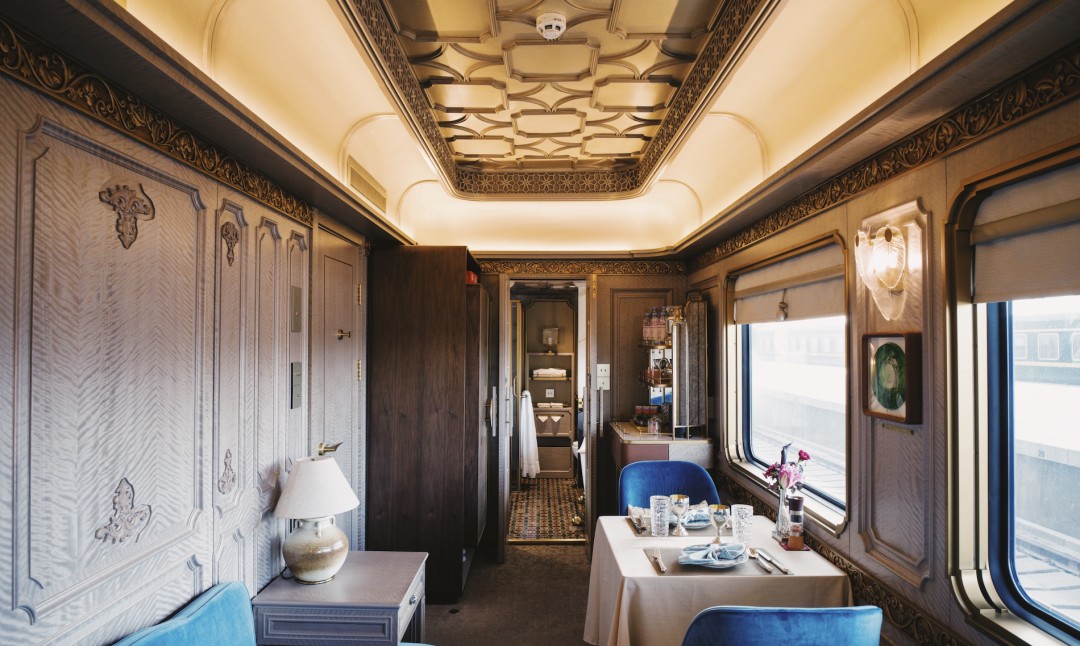
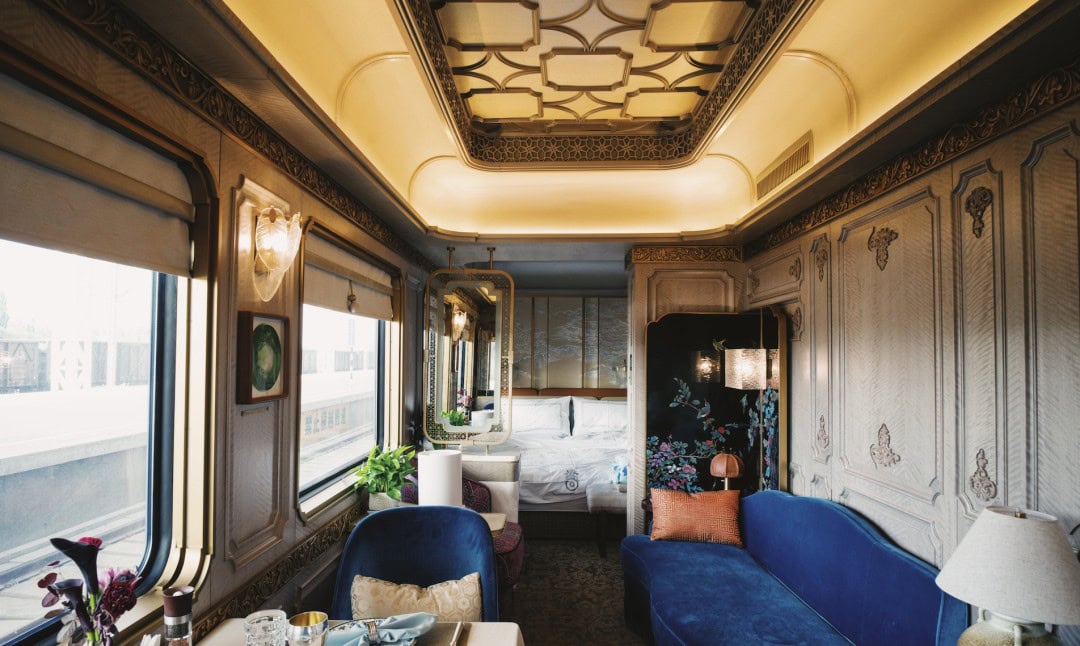
The bedroom features a large bed measuring 1.8 by 2 meters, and since we traveled as two adults and one child, we weren’t crowded at all. You can see the image of the bedroom; I believe this is the largest bed that can fit on a train.
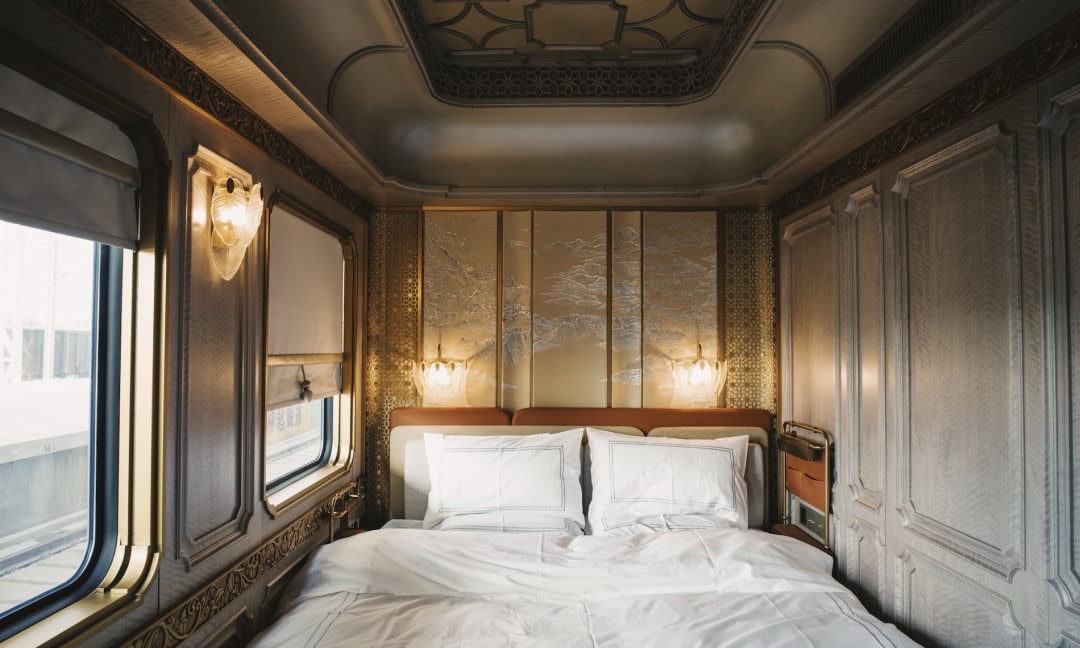
The bathroom has a wet and dry separation and includes a bathtub. One of the suite’s highlights is that you can lie in the bathtub and gaze out at the scenery through the train window.
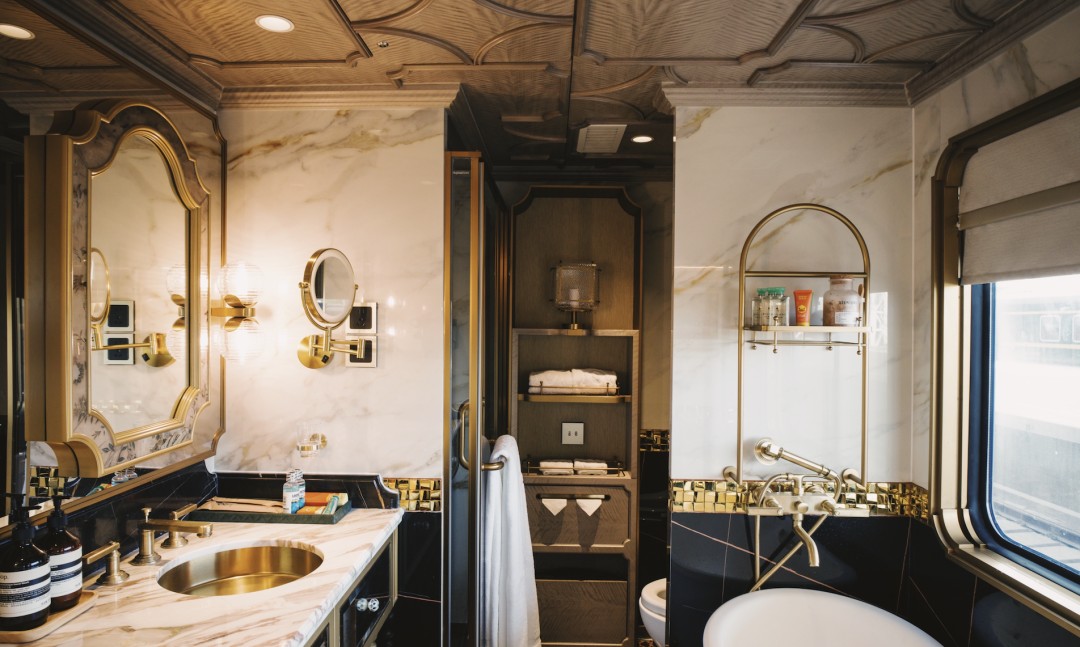

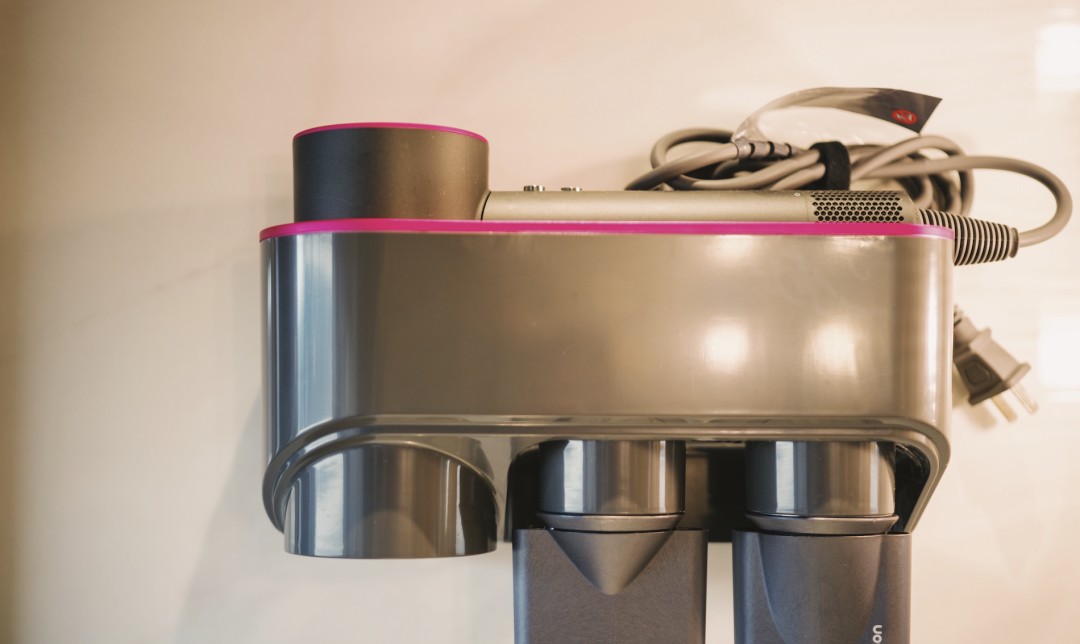
The suite amenities include Bulgari products, and since we brought a child along, we received a separate set of kids’ amenities. The hairdryer provided is a Dyson.
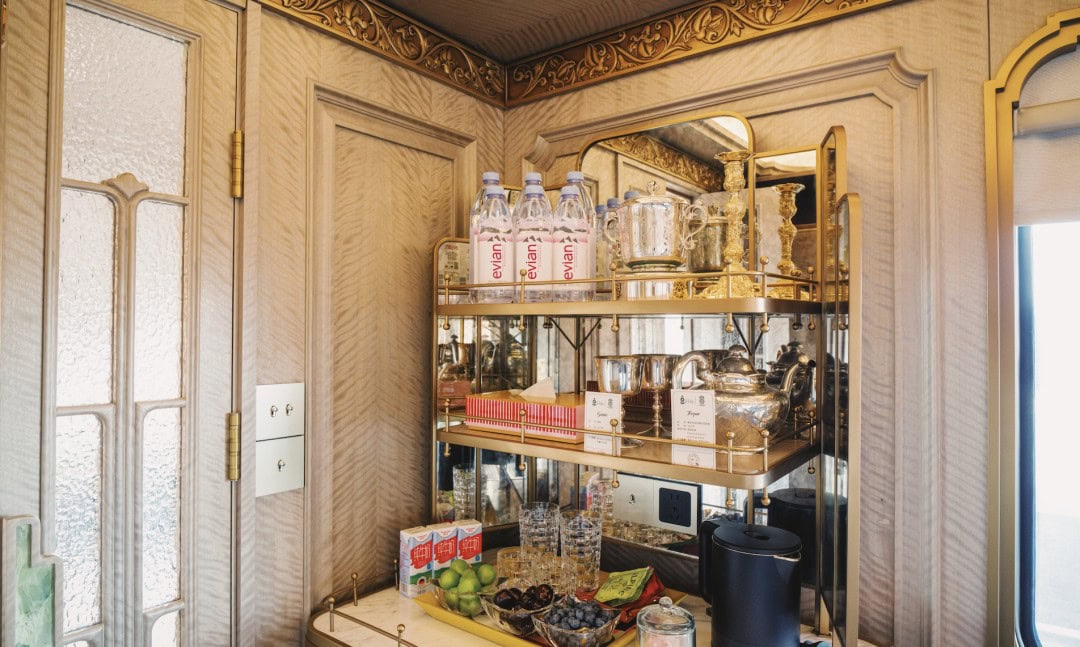
The Mini Bar is completely free, featuring quite a variety of items.
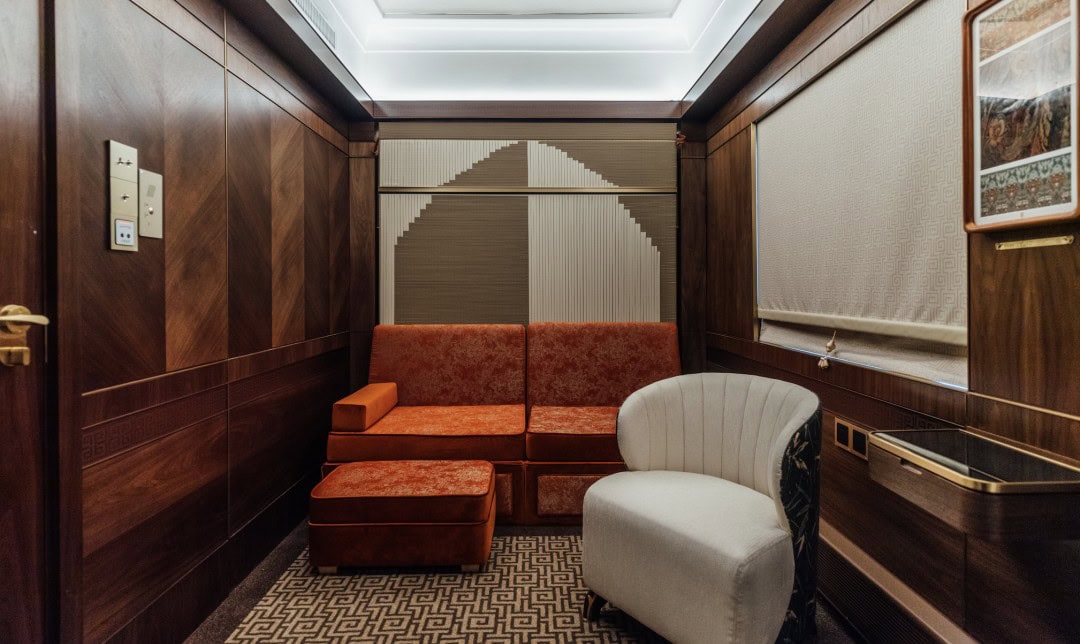
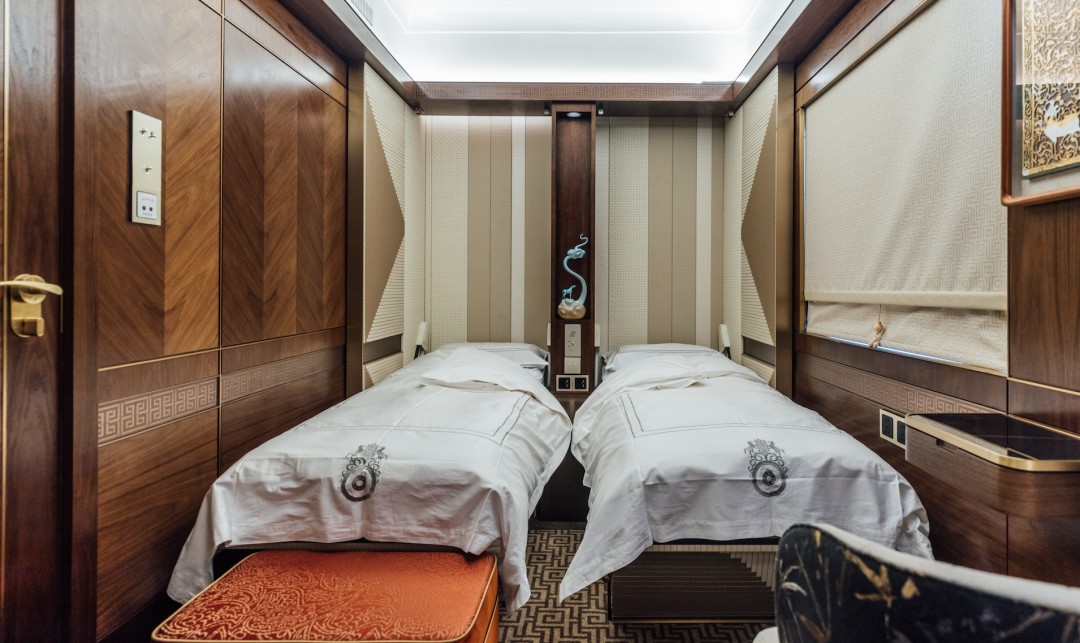
If you think the suite’s entry point is too high to represent the entire train, I’ll show you other room types. The basic room (11 square meters) features a day-to-night design, with the bed converting to a sofa during the day and changing back to a bed at night. Your steward will assist with these transitions.
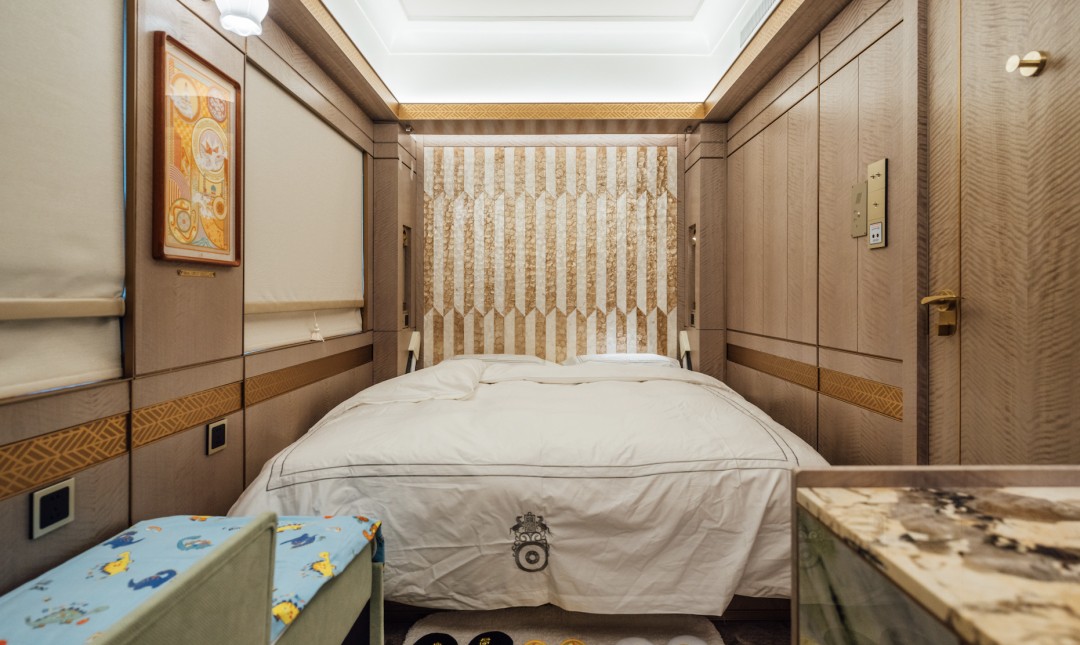
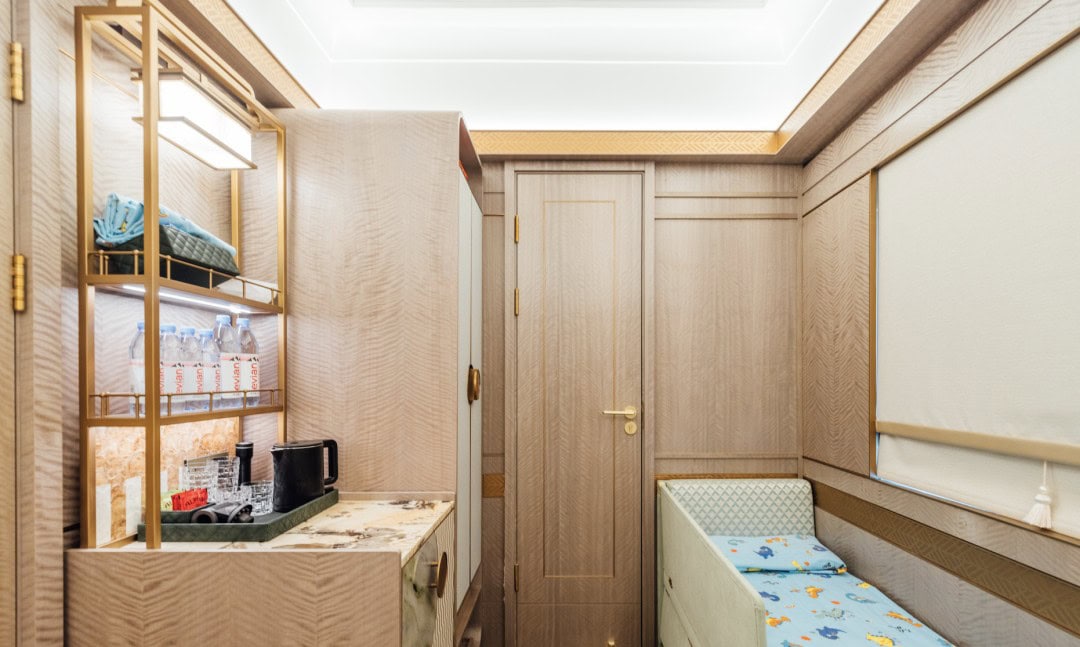
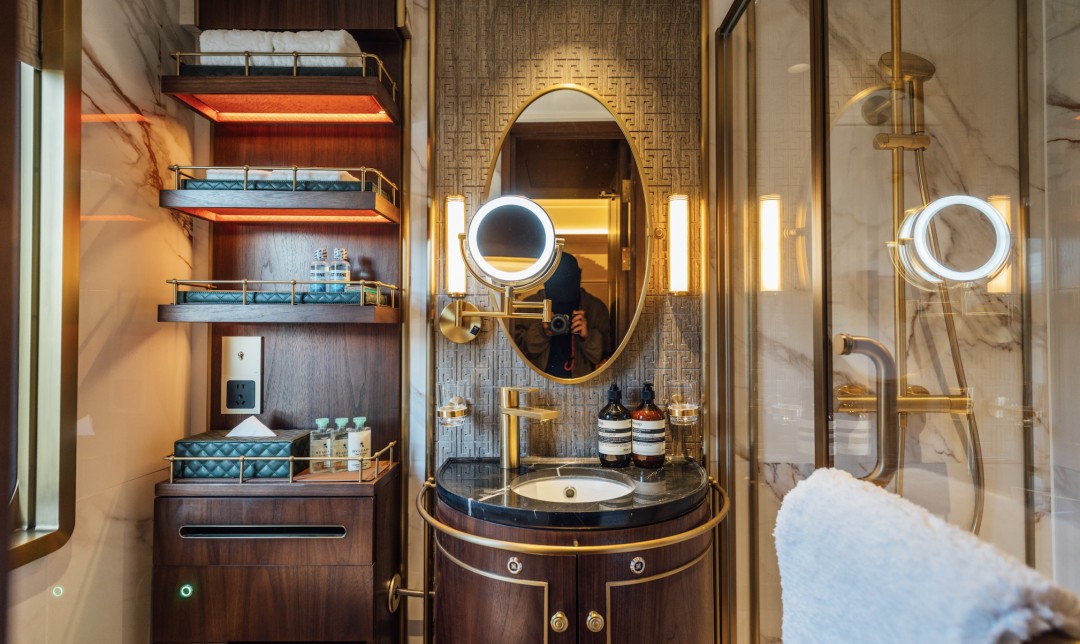
The family room (11 square meters) includes a large bed (1.7m x 1.9m) and a children’s bed (0.6m x 1.7m), accommodating two adults and one child easily.
In any room on the train, the bathrooms are all designed with wet and dry separation.
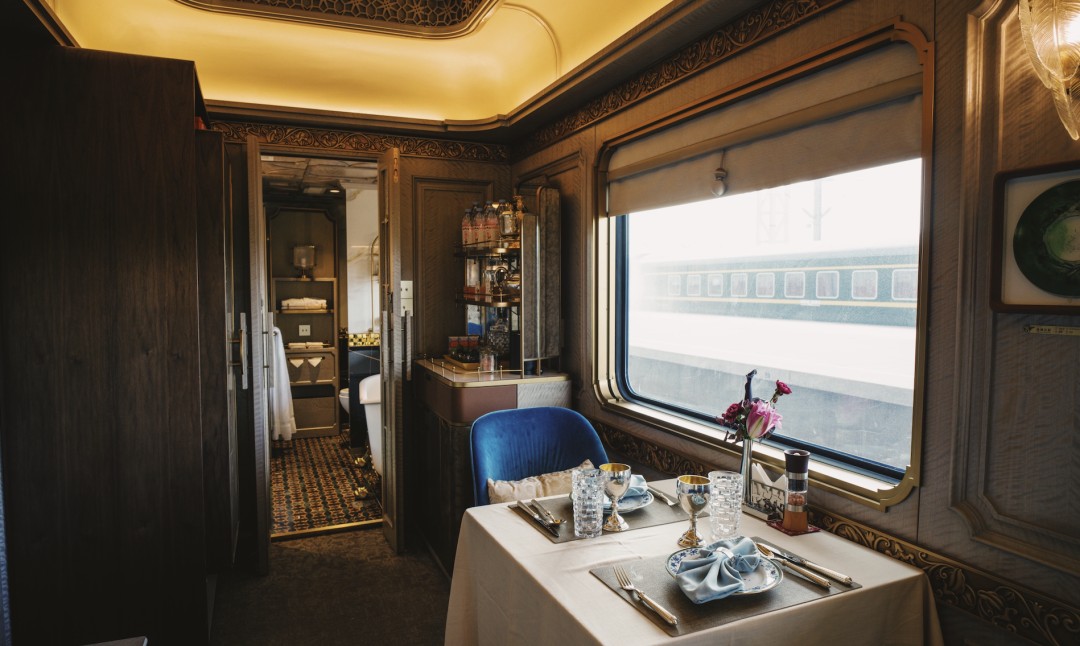
It’s truly remarkable how comfortable and well-appointed these train rooms are. The Silk Road Dream Train has a total of 15 carriages, of which 10 are equipped with fully independent bathrooms. Only 38 rooms are distributed across these 10 carriages. Each suite occupies one carriage with two rooms, and other room types accommodate four rooms per carriage.
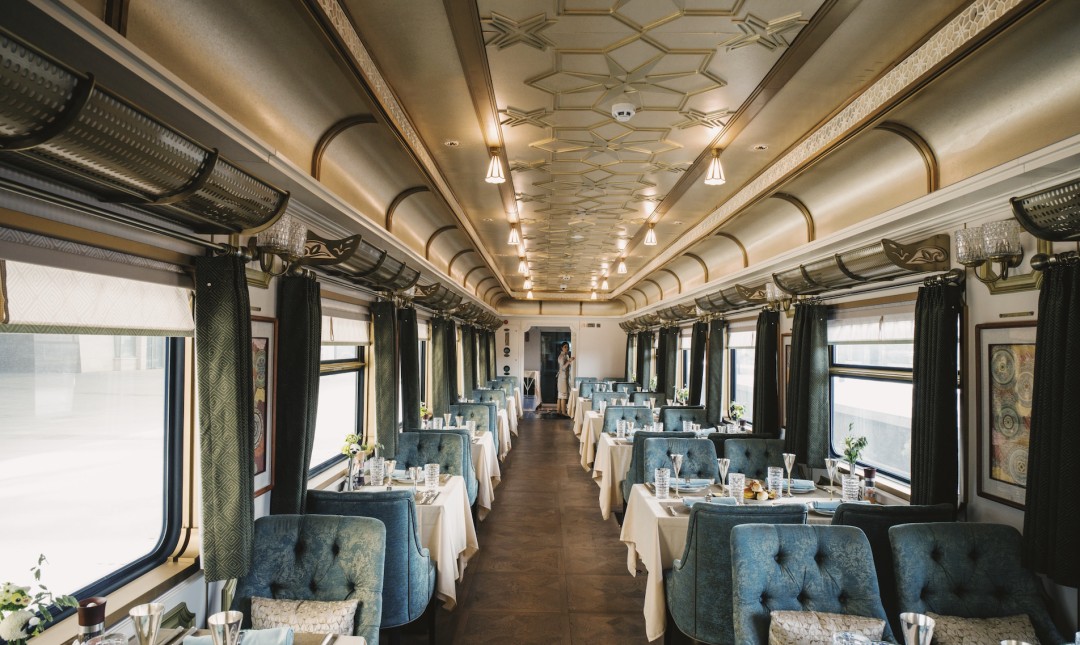
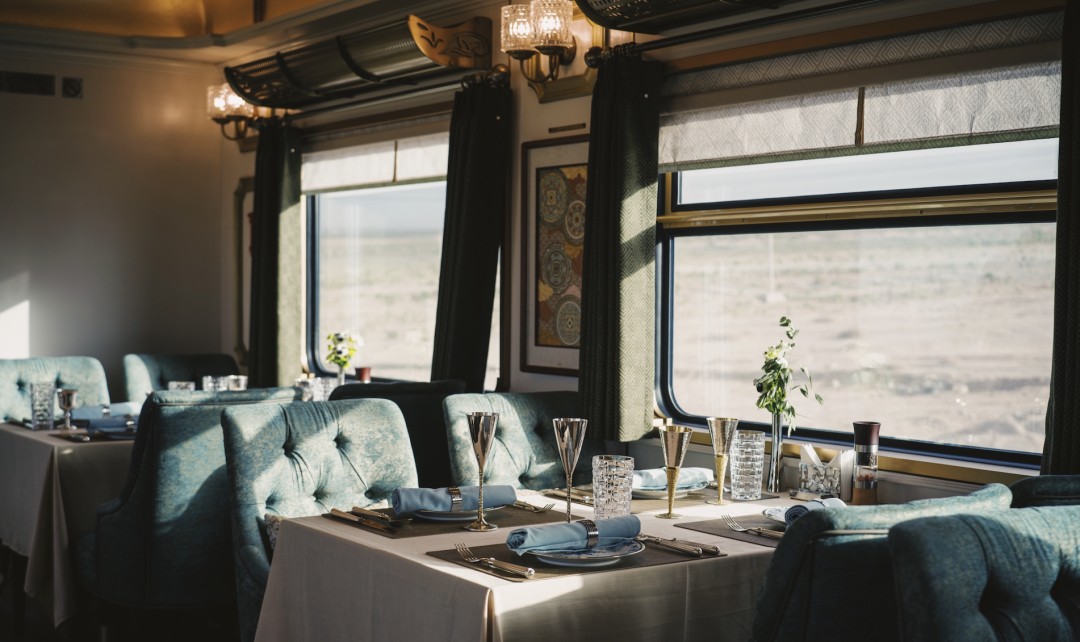
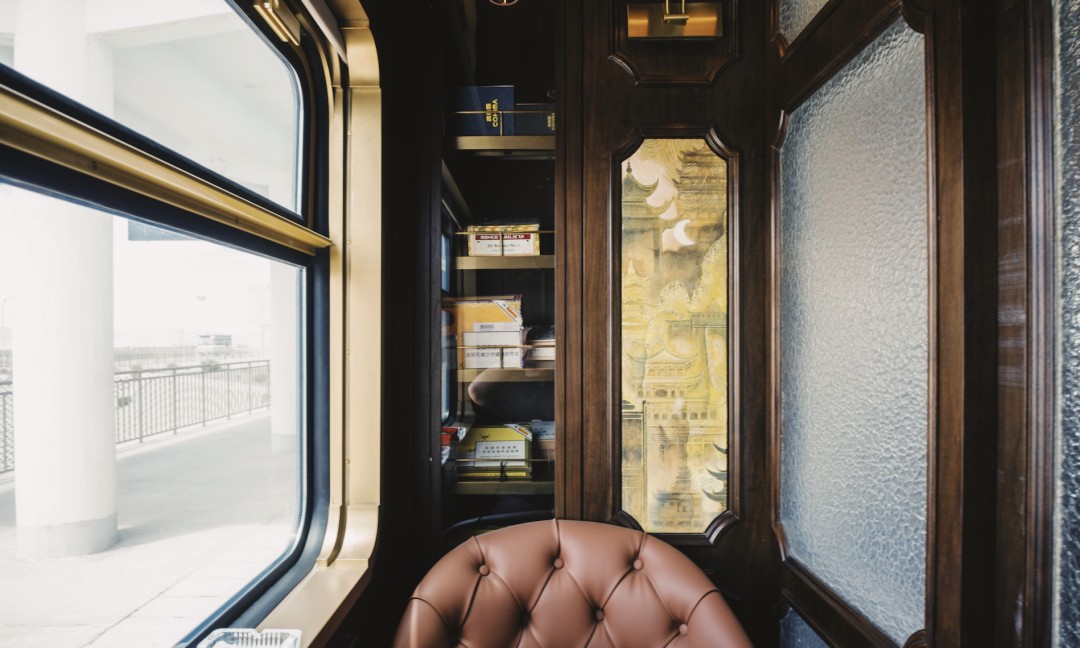
Among the five public carriages, there are two dining carriages, one featuring a vintage-style Chinese dining hall and another offering an elegant Western dining experience.
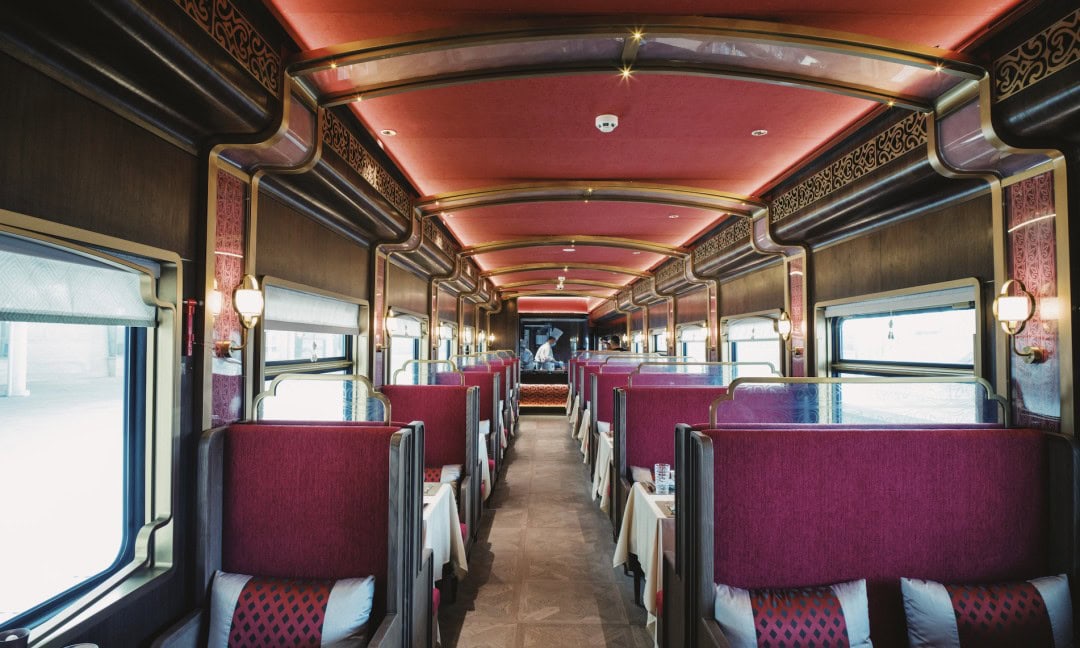
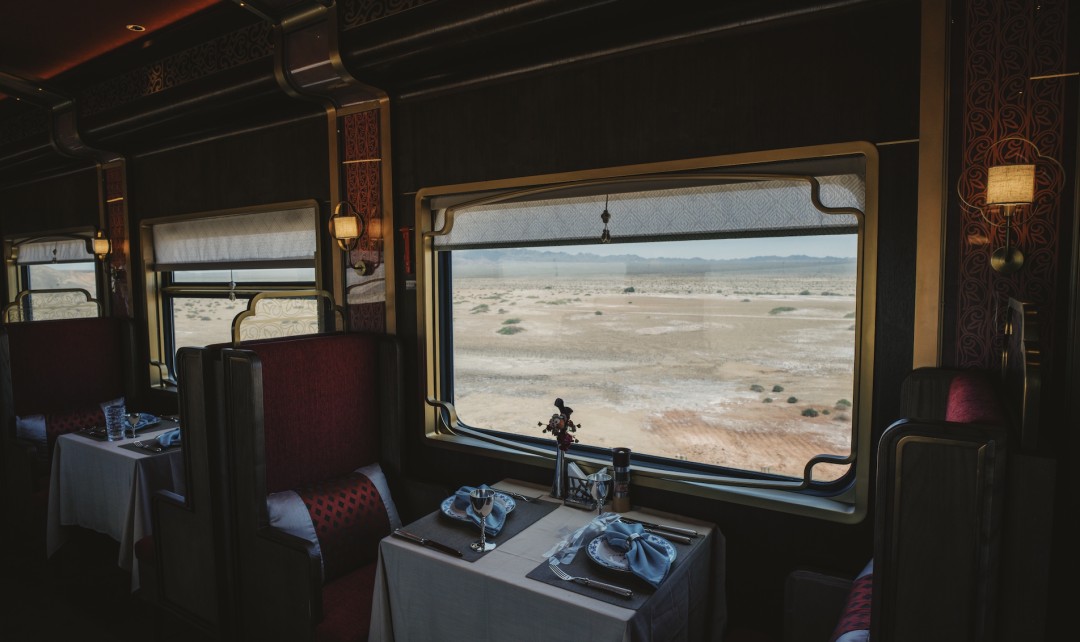
Within the Western dining car, there’s also a cigar bar, which is the only place on the train where smoking is permitted.
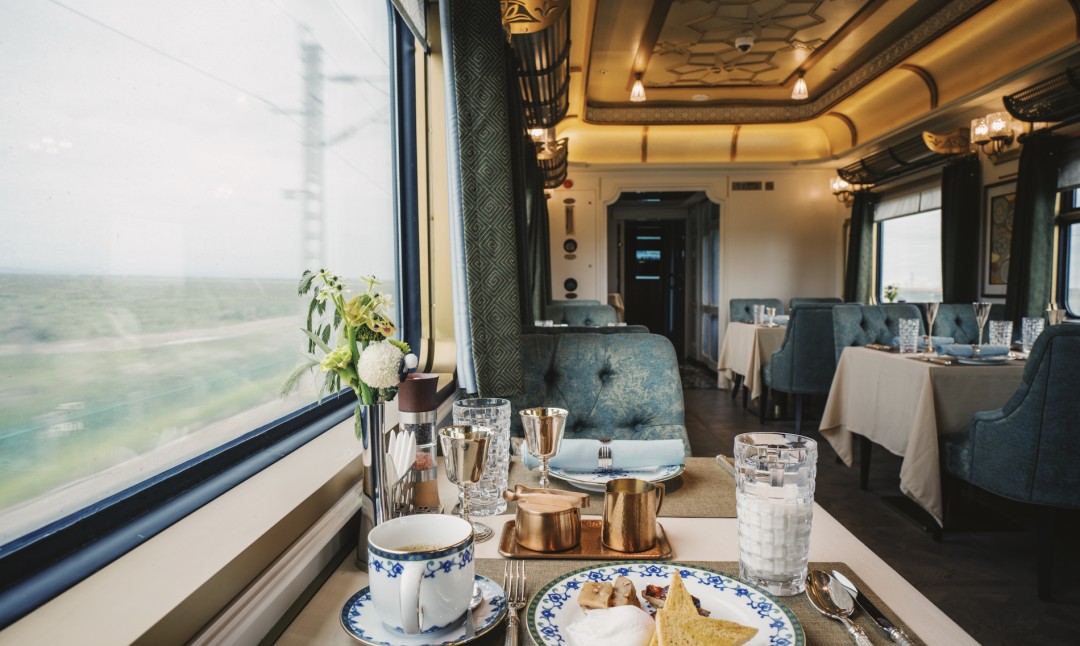
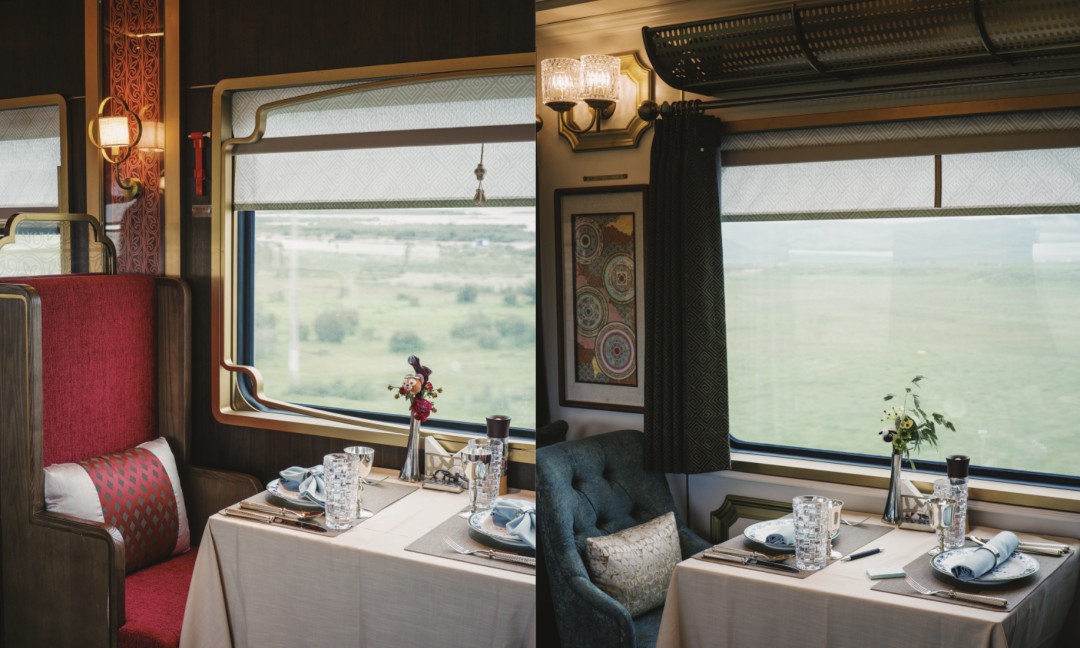
Every time we dined in the dining car, the windows served as frames for the view. Traveling from Dunhuang to Xining, there’s a stretch along the Qinghai-Tibet Railway, featuring serene waters, rolling mountains, and vast deserts, all breathtakingly beautiful.
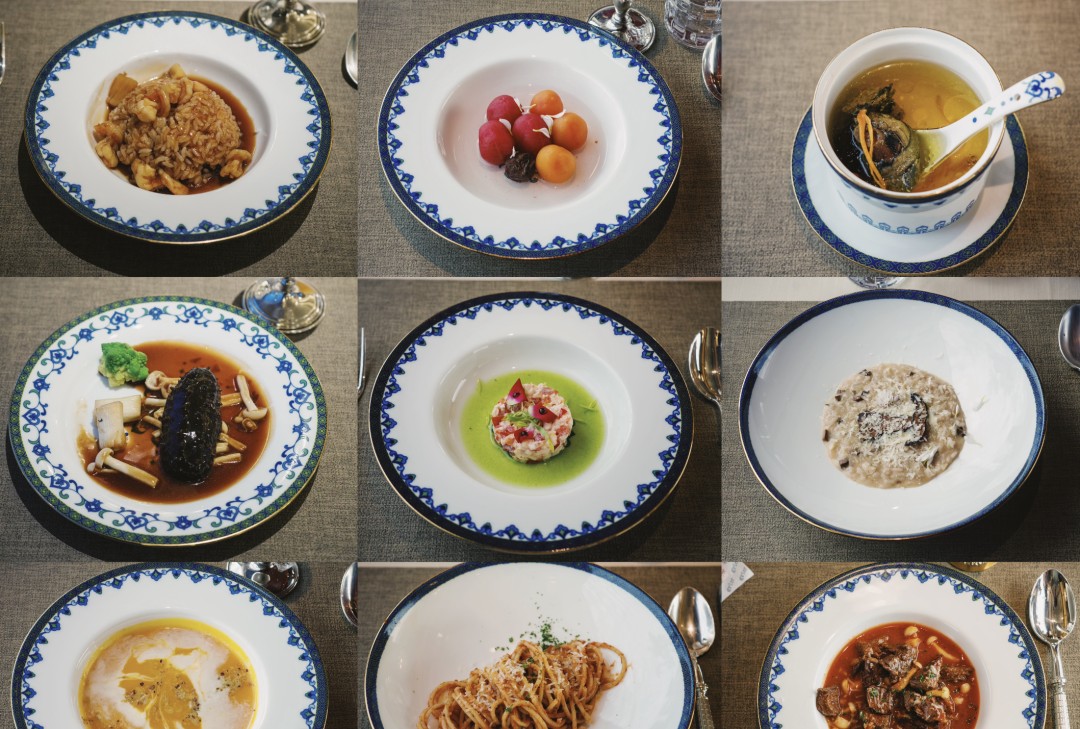
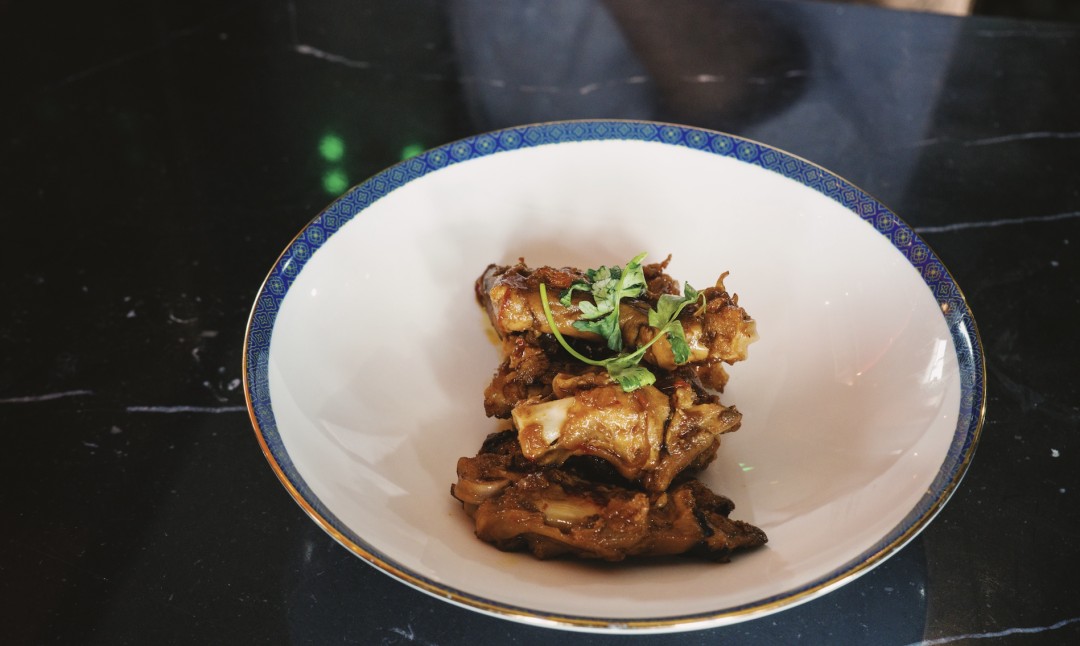
The menu combines Chinese and Western dishes, served by course. I’ll simply post some pictures of the delectable food I enjoyed onboard; it was truly a “pig-raising” journey, and gaining three pounds wouldn’t even be surprising.
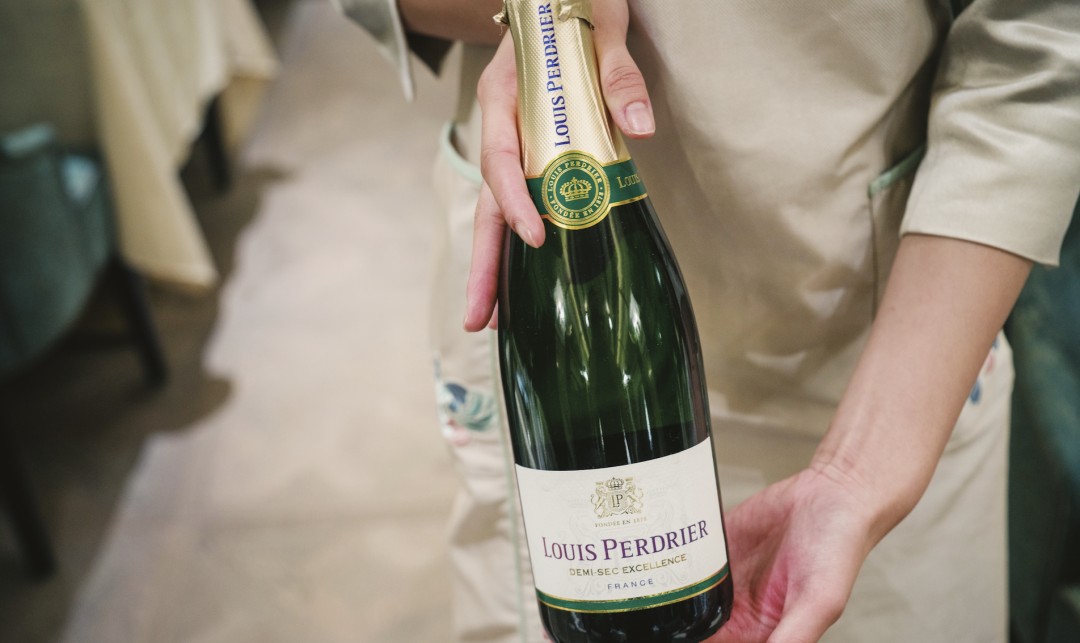

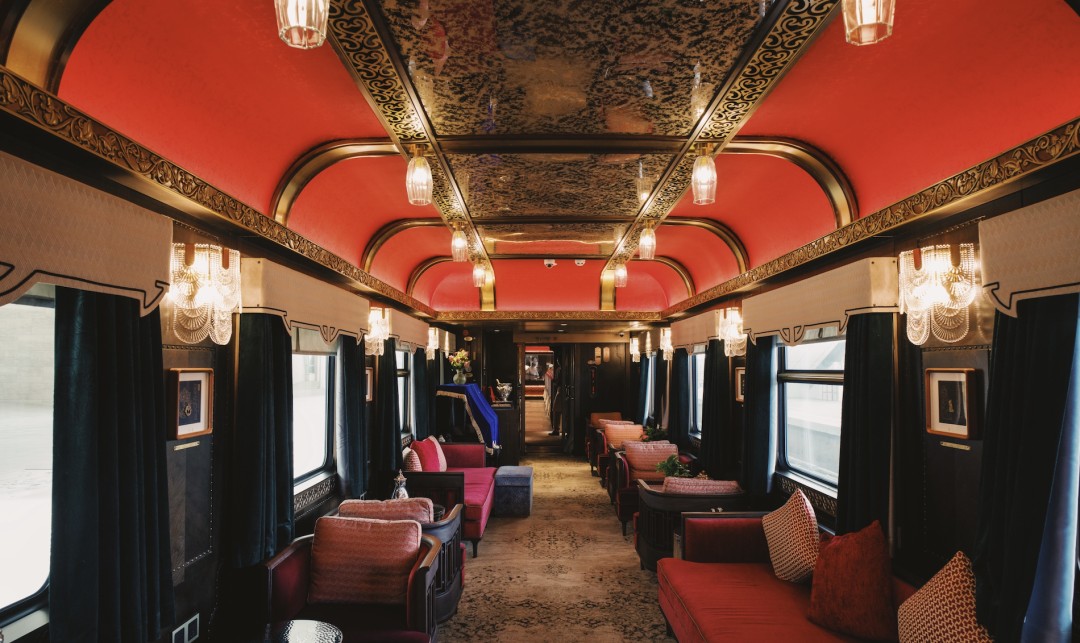
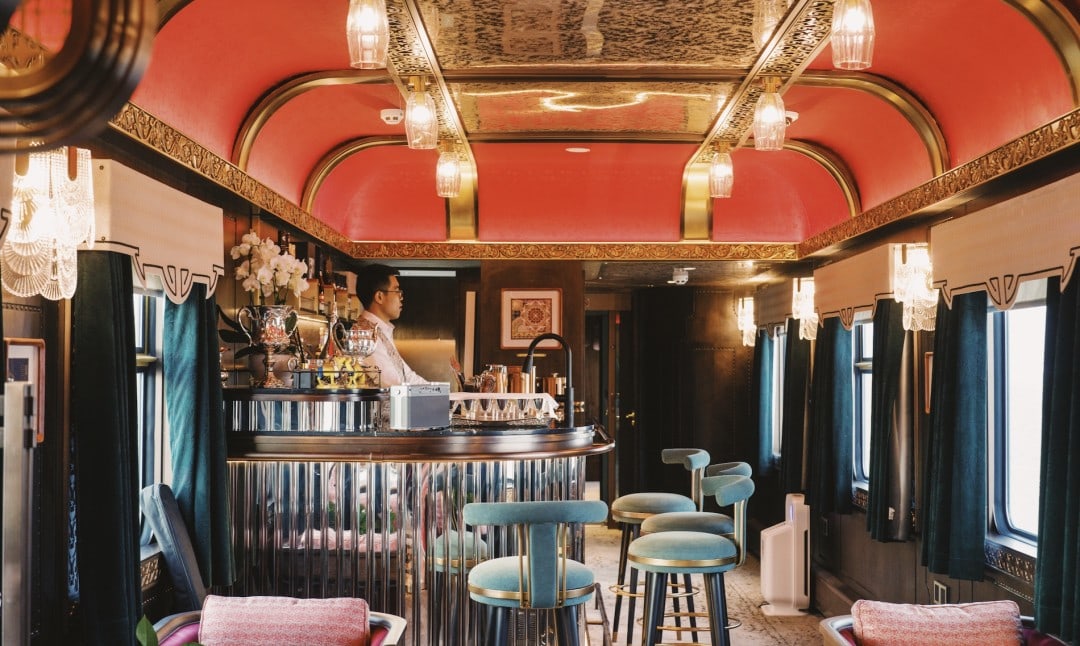
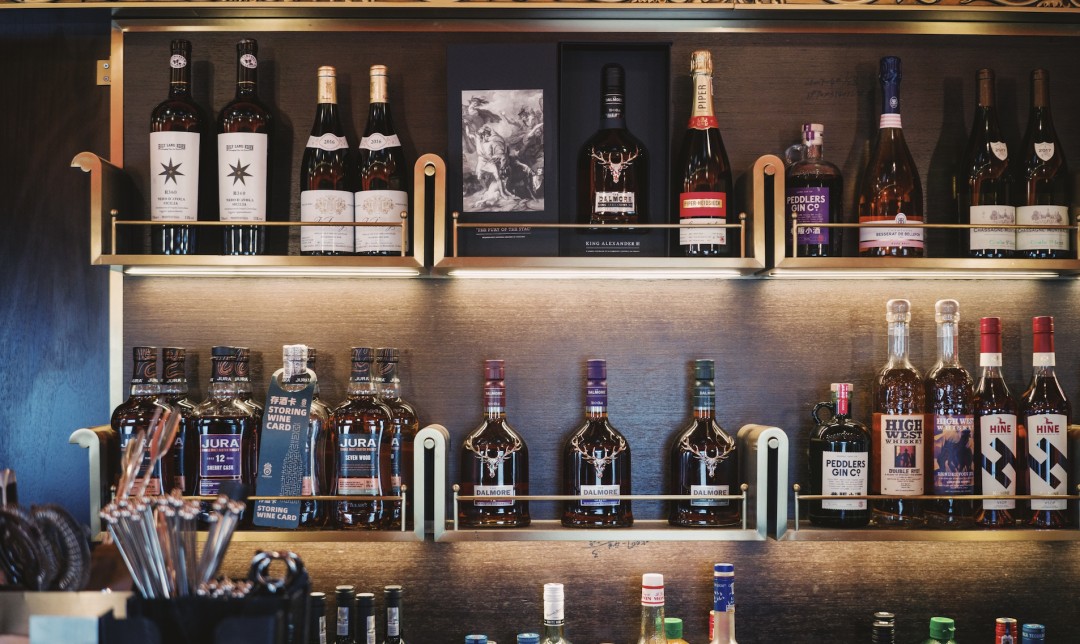
If any dishes don’t suit your taste, you can ask the chef to prepare something you prefer. One of the gentlemen traveling with us requested ribs from the kitchen.
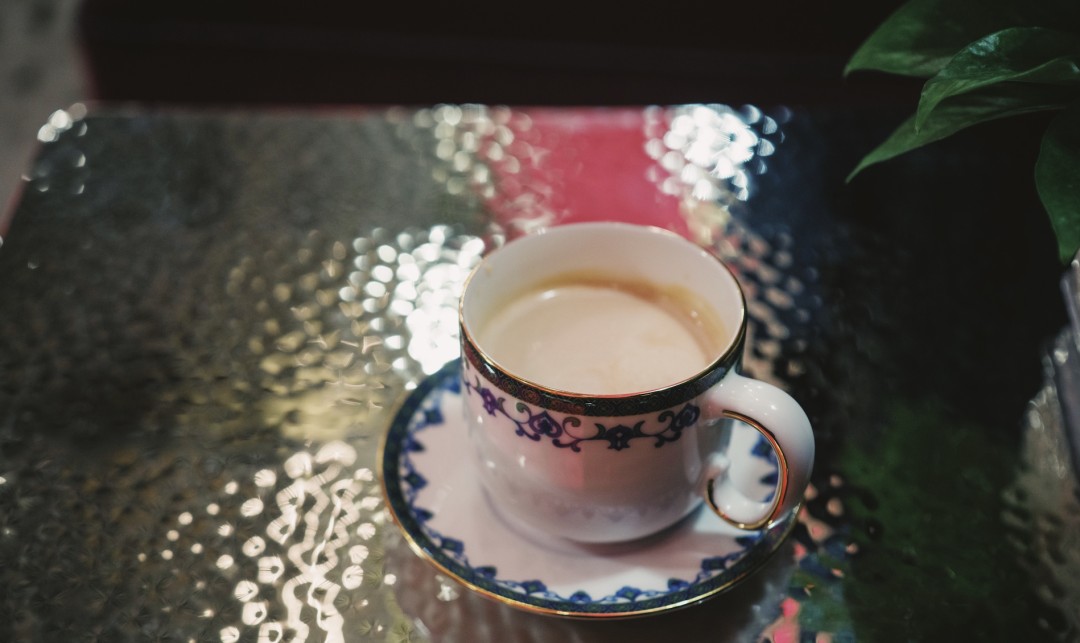
Most drinks were served with meals, mostly complimentary, with just a few special items requiring payment (which are rarely necessary).
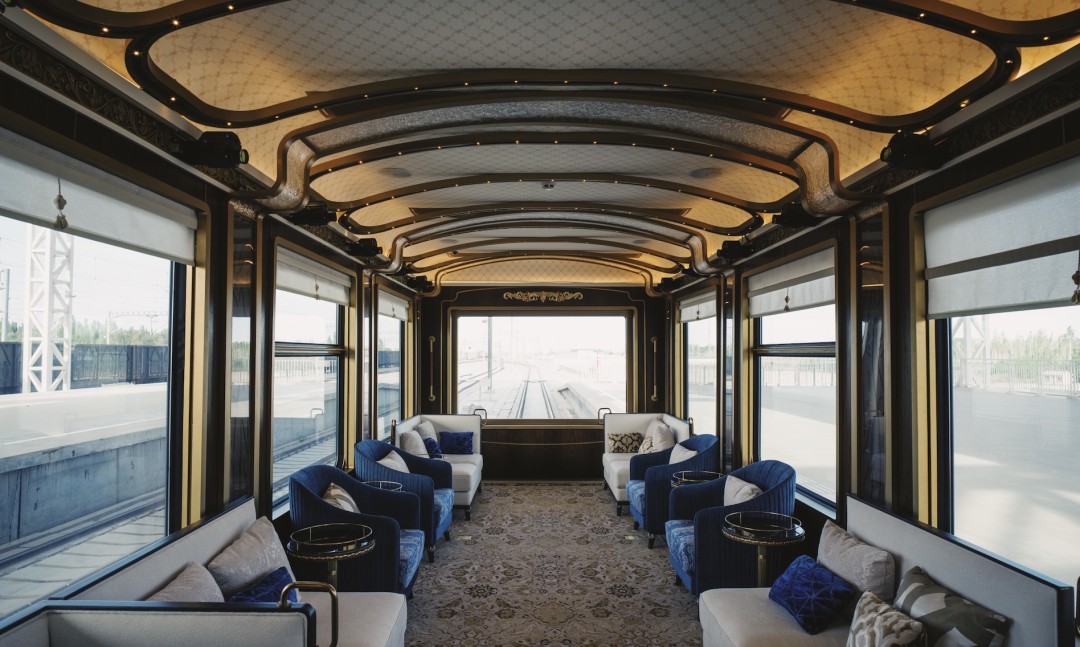
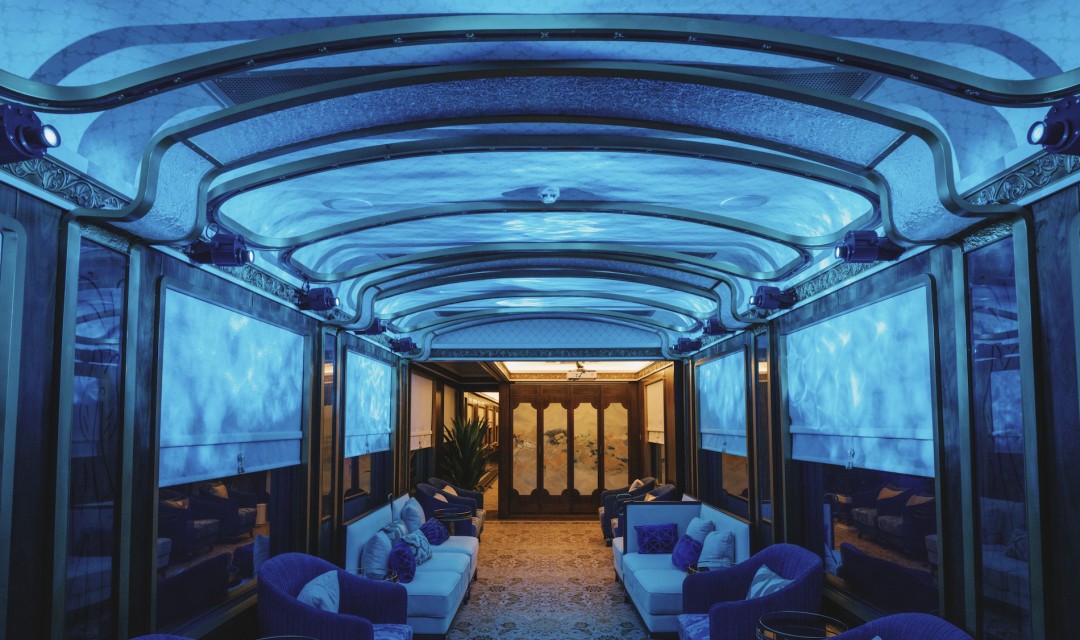
Adjacent to the dining car is the lounge car, featuring a bar that serves drinks, crafted by professional bartenders.
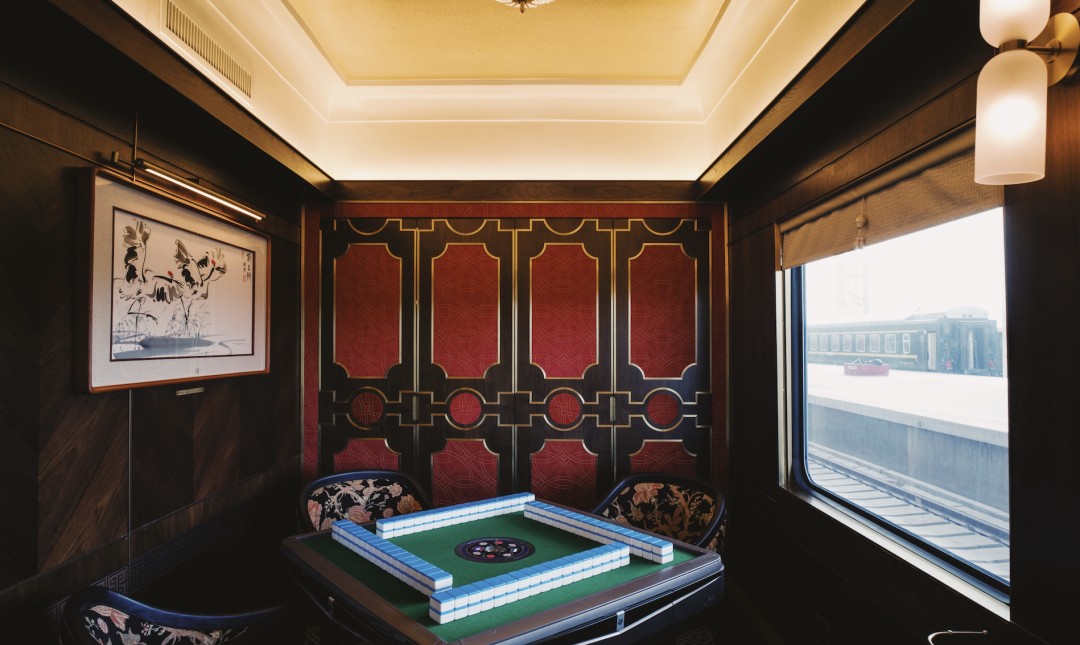
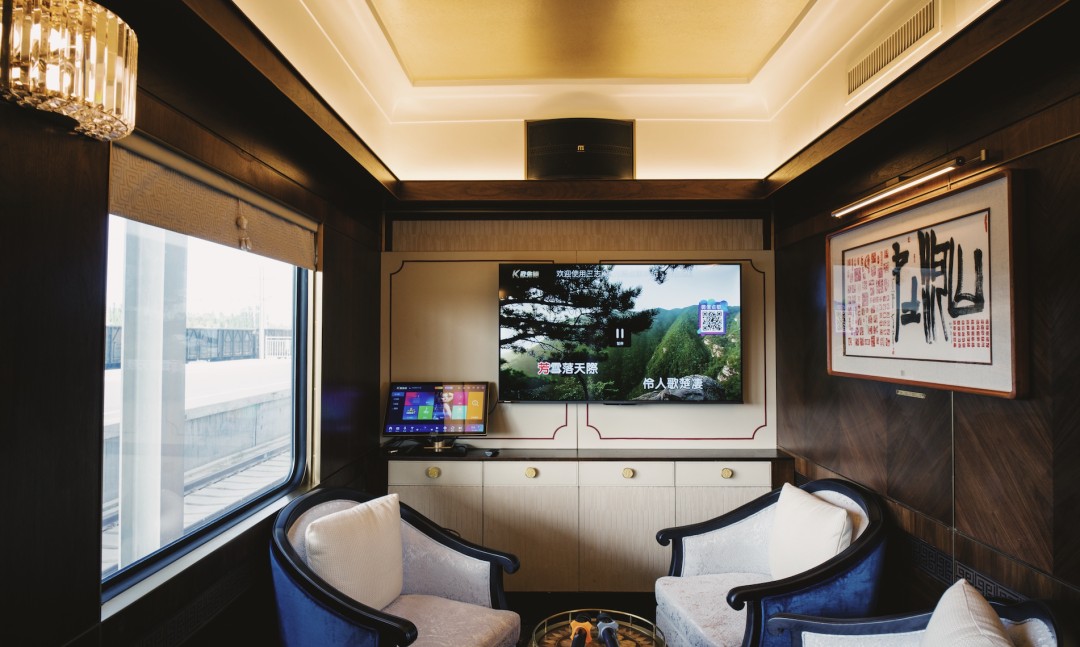
As someone who doesn’t drink, I visited the lounge car every day for coffee.
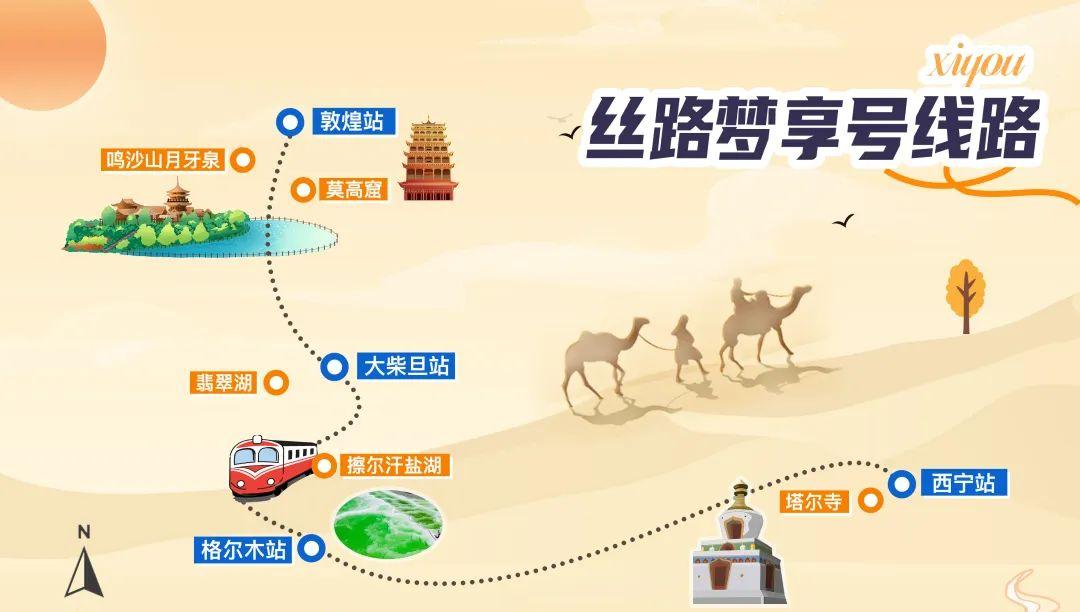
My personal favorite was the last carriage, the Han Yuefu carriage, which is also the only 180° panoramic carriage on the Silk Road Dream Train. The views from here during the journey are the most picturesque.
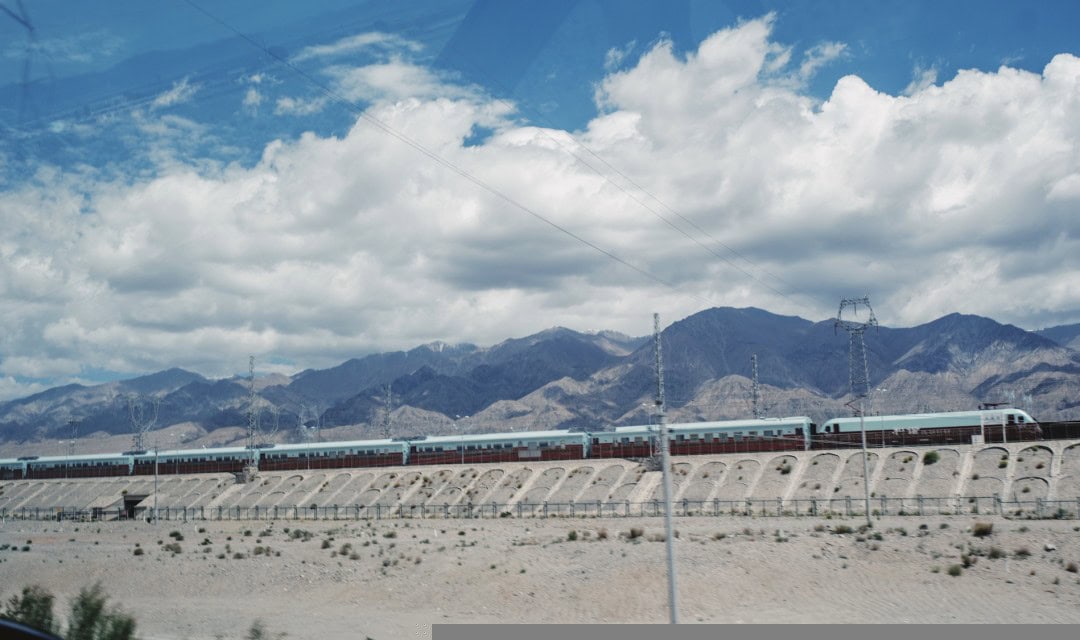
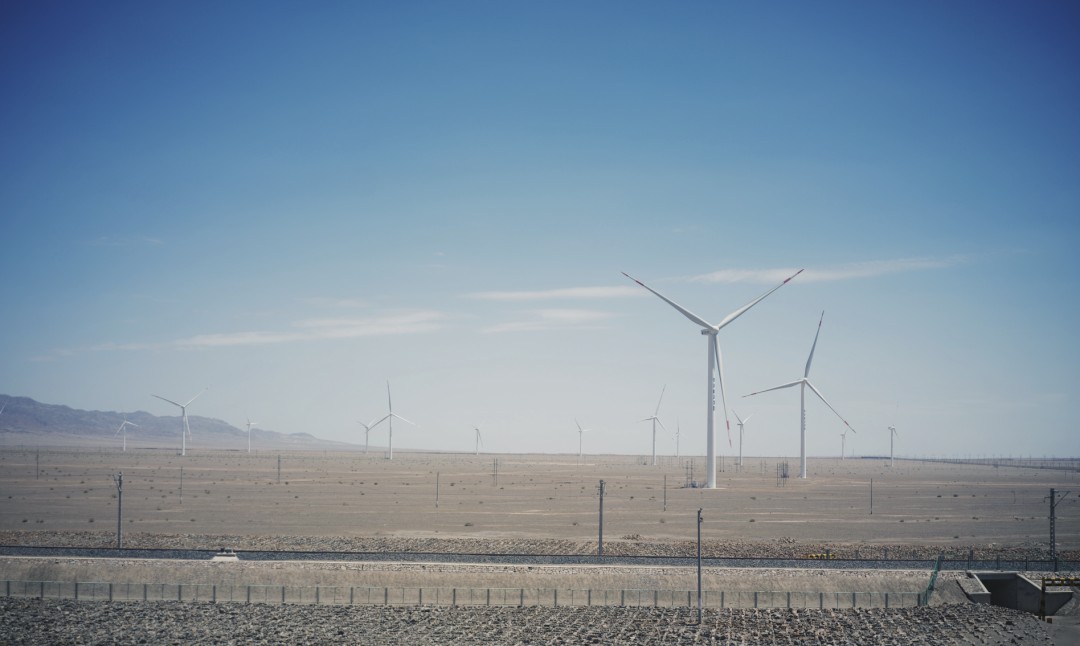
At night, the Han Yuefu carriage is illuminated, casting beautiful shadows like a deep blue underwater scene.
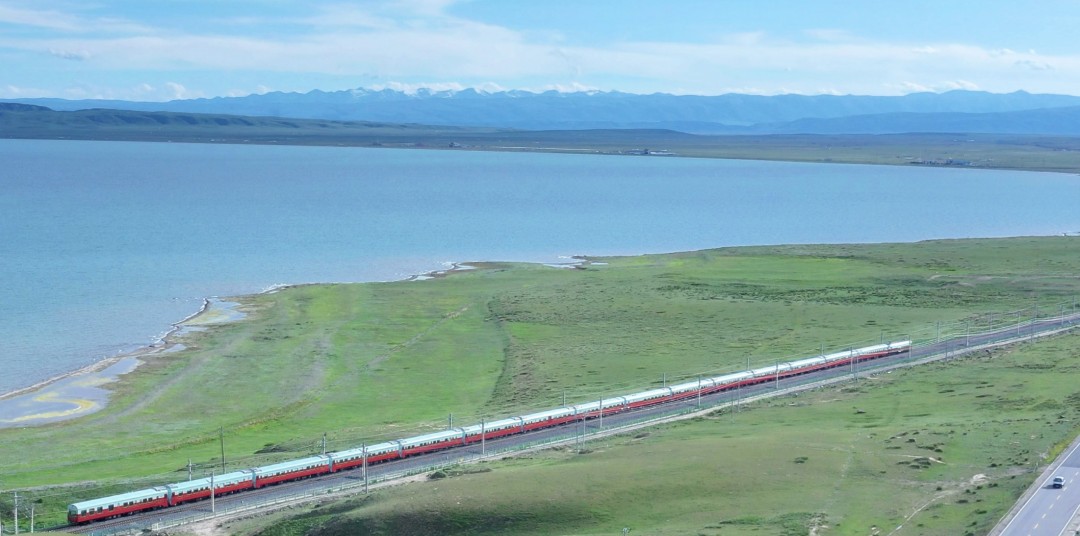
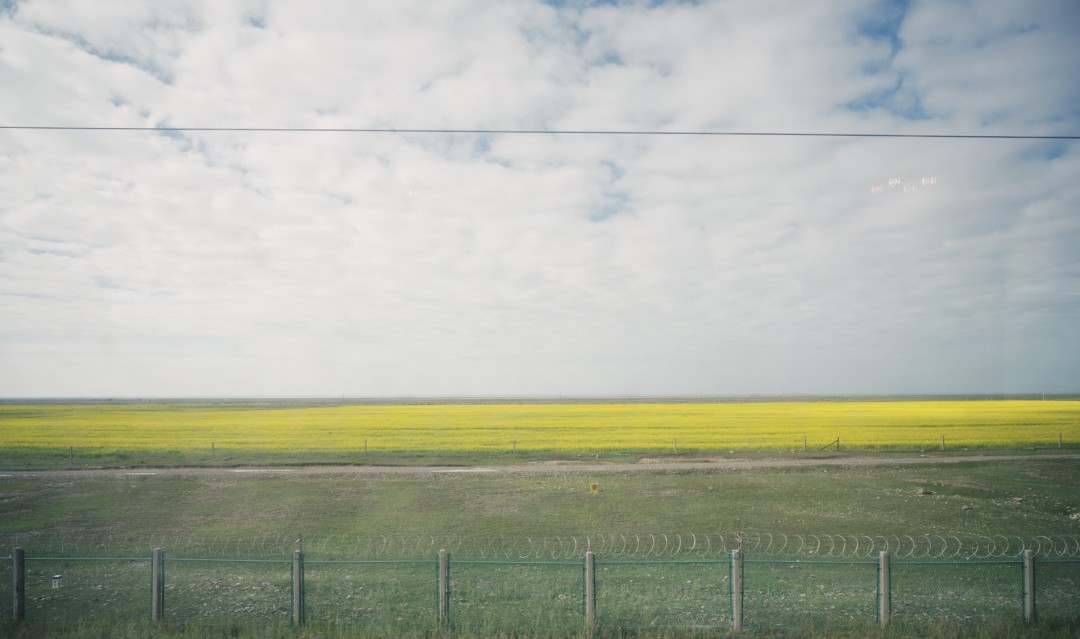
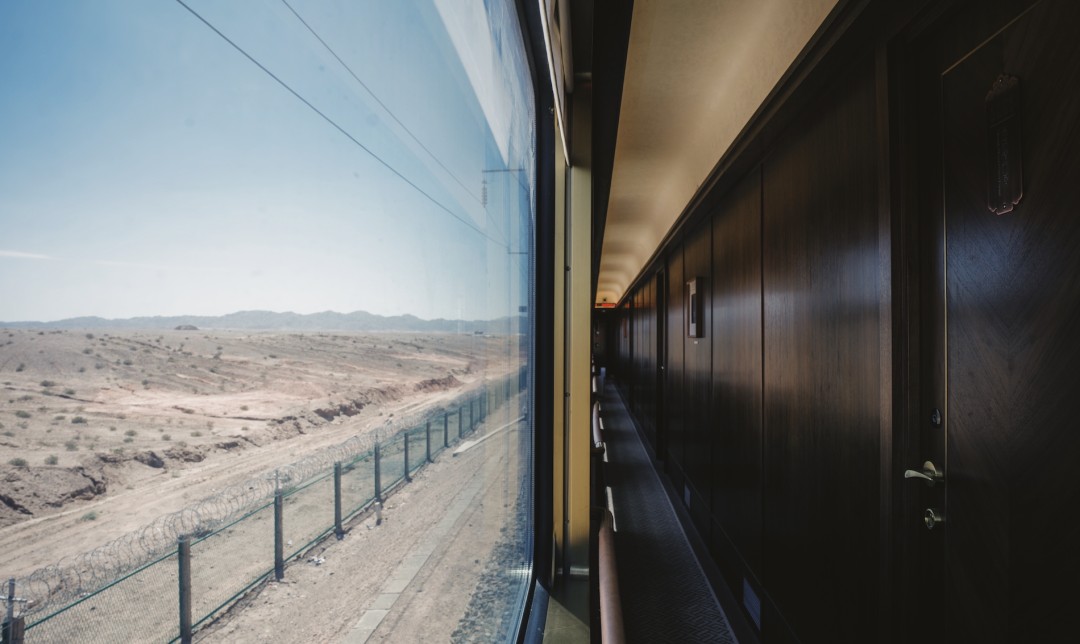
This carriage also features a private room for playing cards and another for karaoke.
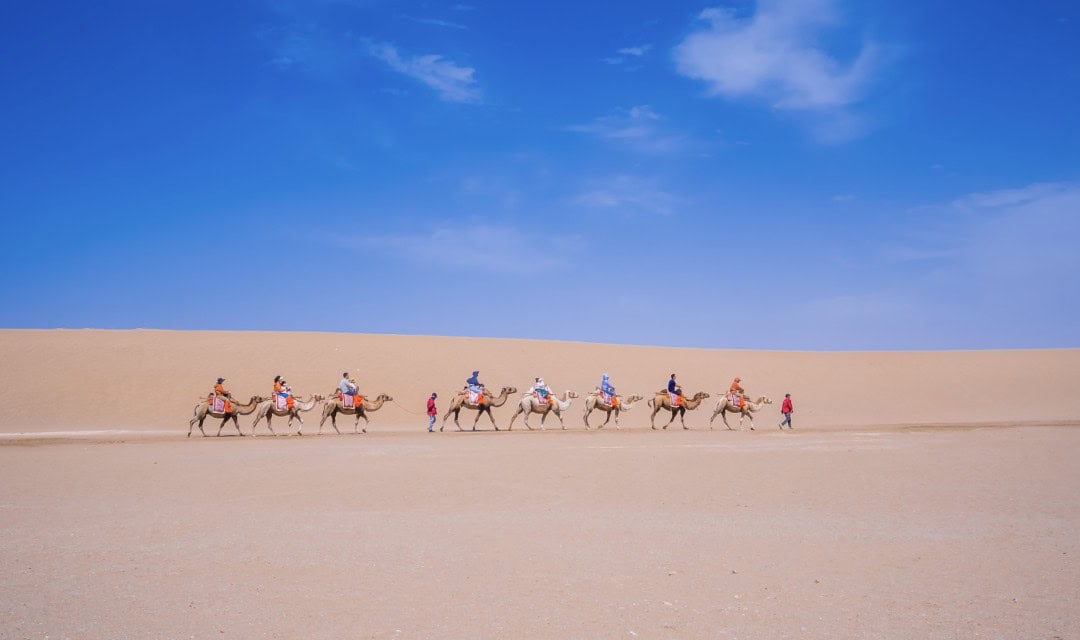
Outdoor Scenery
The beautiful scenery outside can be divided into two parts. One is the view through the train window while in motion, and the other is the attractions you can explore when the train stops.
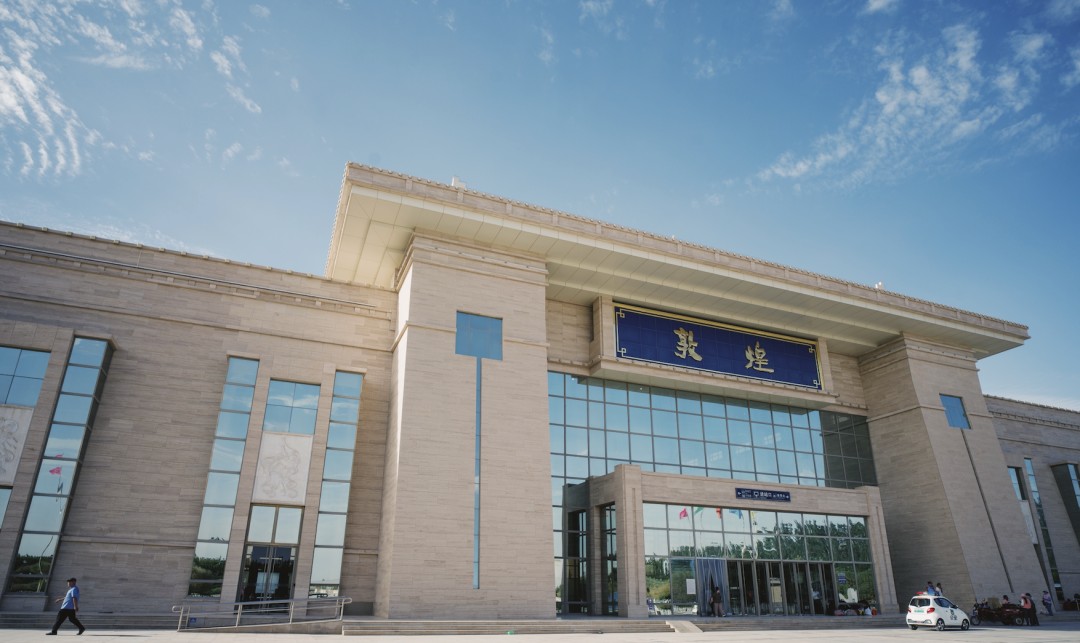
The Silk Road Dream Train travels from Dunhuang to Xining (or vice versa from Xining to Dunhuang), passing through deserts, gobi, grasslands, and lakes. I particularly enjoy the section coming out of Dunhuang; the feeling of racing through the desert is truly great.
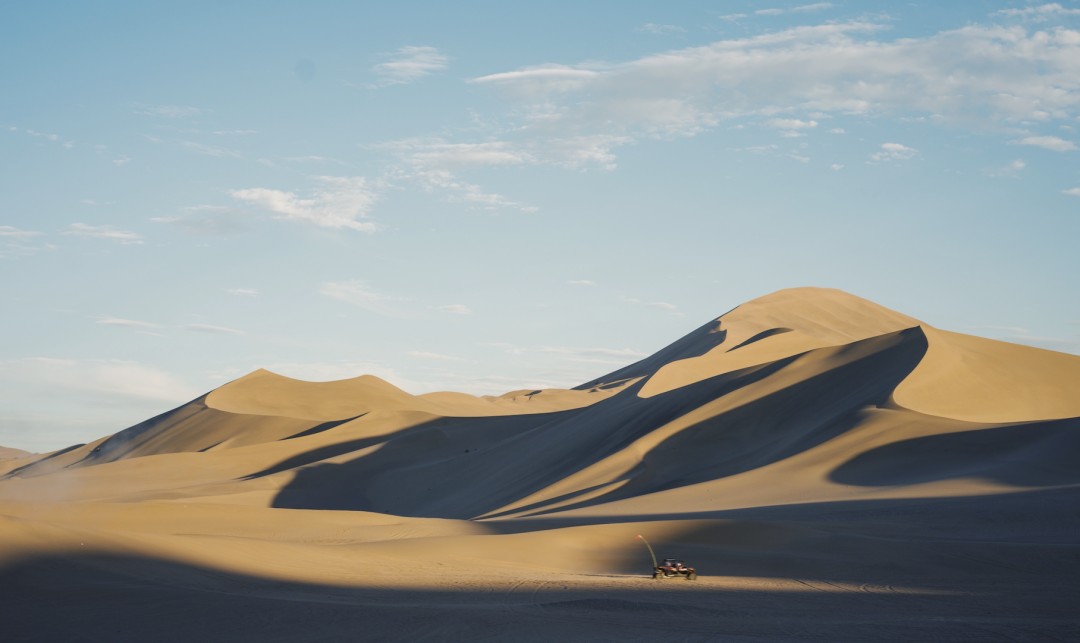
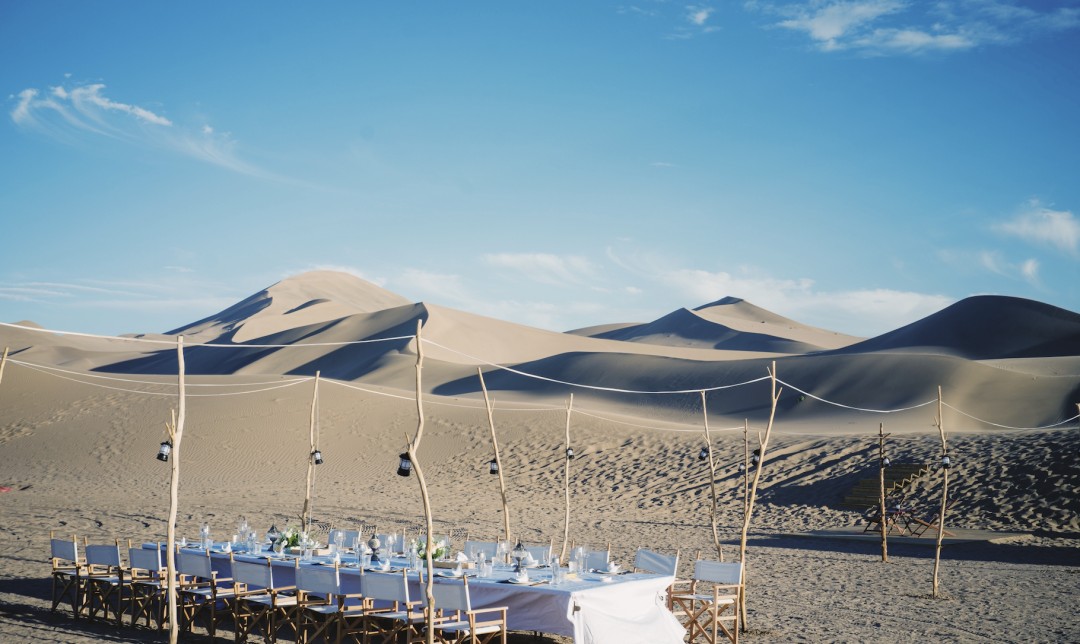
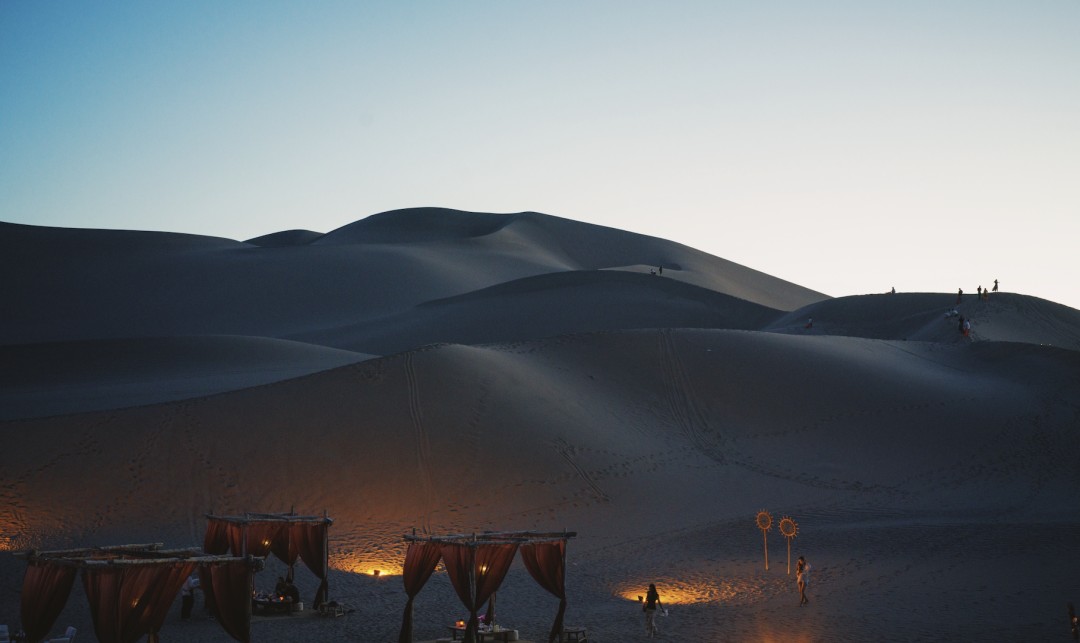
When we reach Qinghai Lake, the experience transforms into strikingly blue lakes against a vast blue sky. Qinghai Lake is immense, and the train seemed to travel for ages without reaching its end. Currently, we are coinciding with the rapeseed flower season at Qinghai Lake, where the views are filled with golden blossoms.
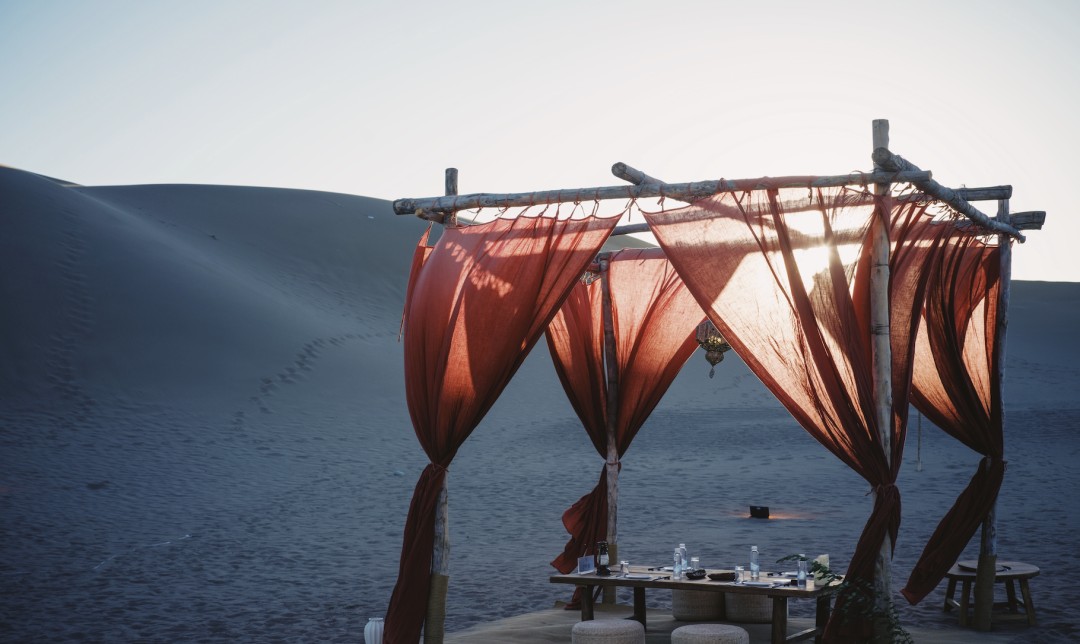
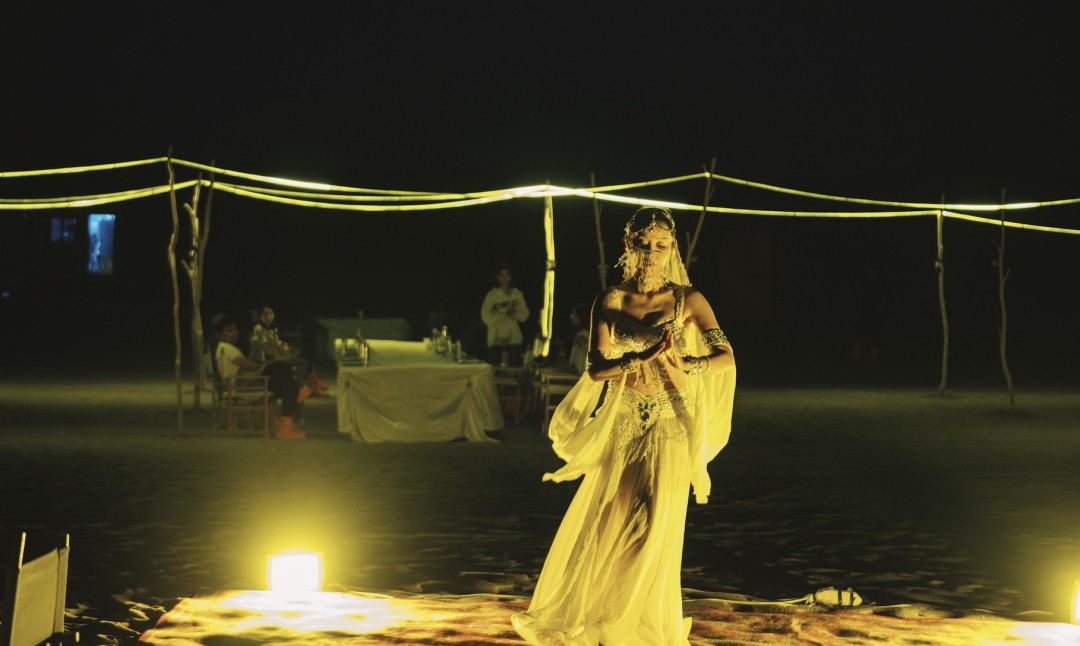
The Silk Road Dream Train schedules some travel time during the day to allow passengers to better appreciate the beautiful landscapes along the route.
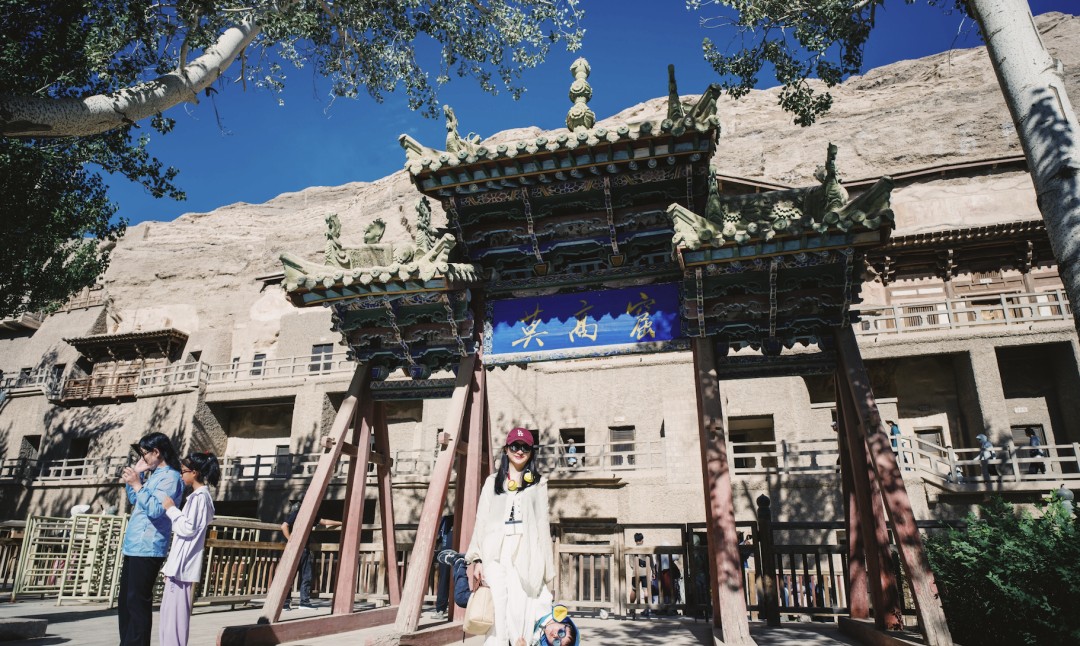
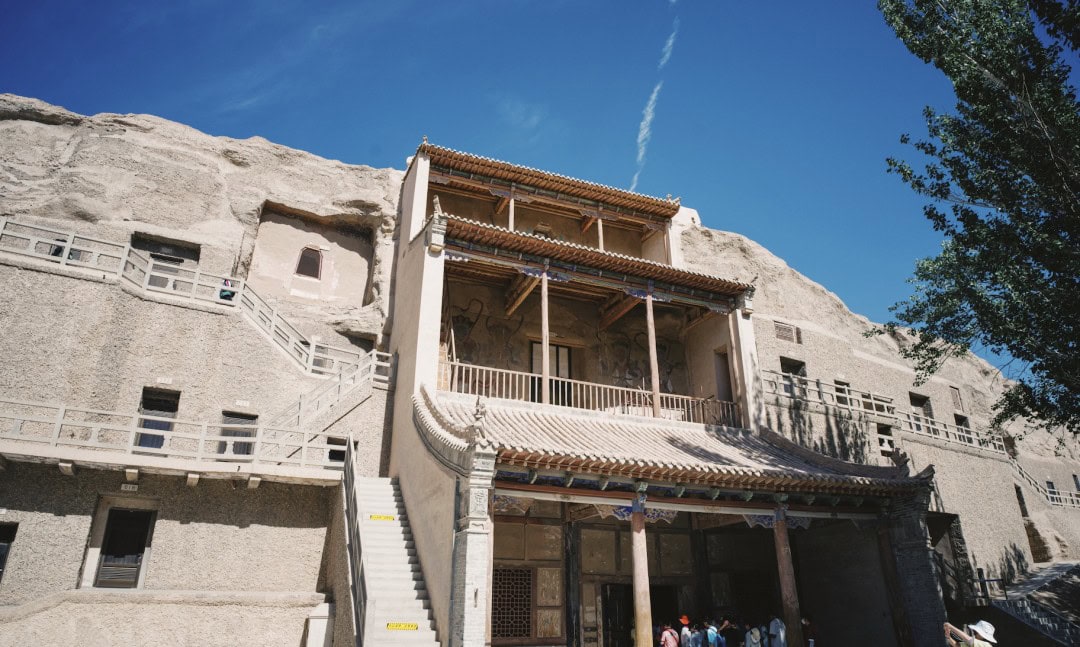
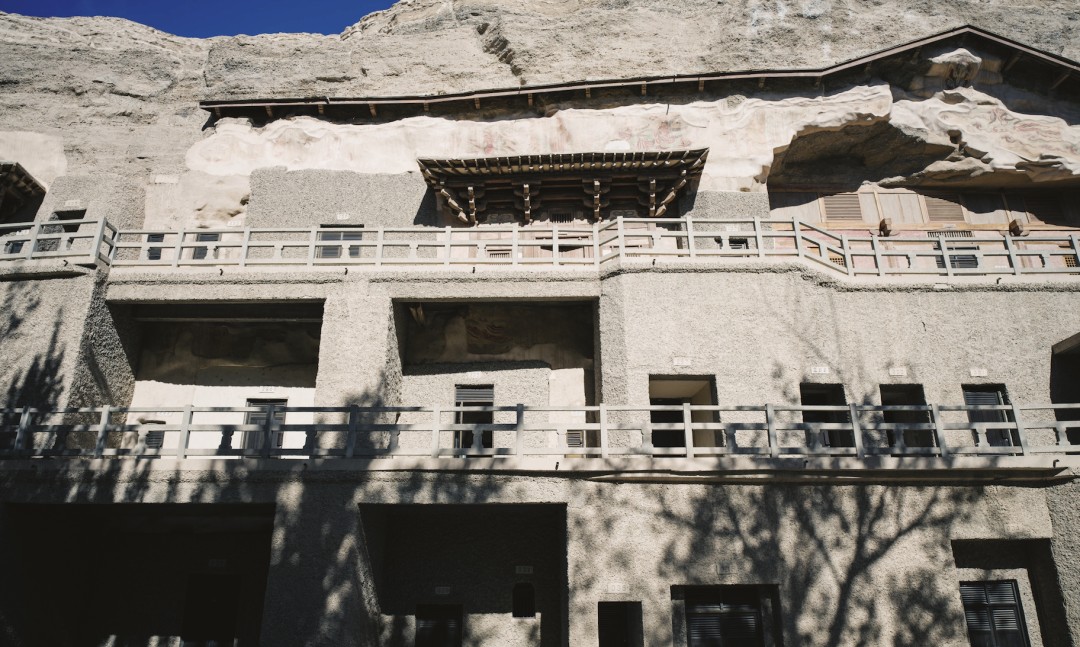
In fact, train travel is similar to river cruising; the train serves as both a mode of transport and a hotel. However, each day offers on-ground excursions with a dedicated vehicle accompanying the journey. At each stop, a Chinese-speaking guide provides commentary, making it an upscale guided tour.
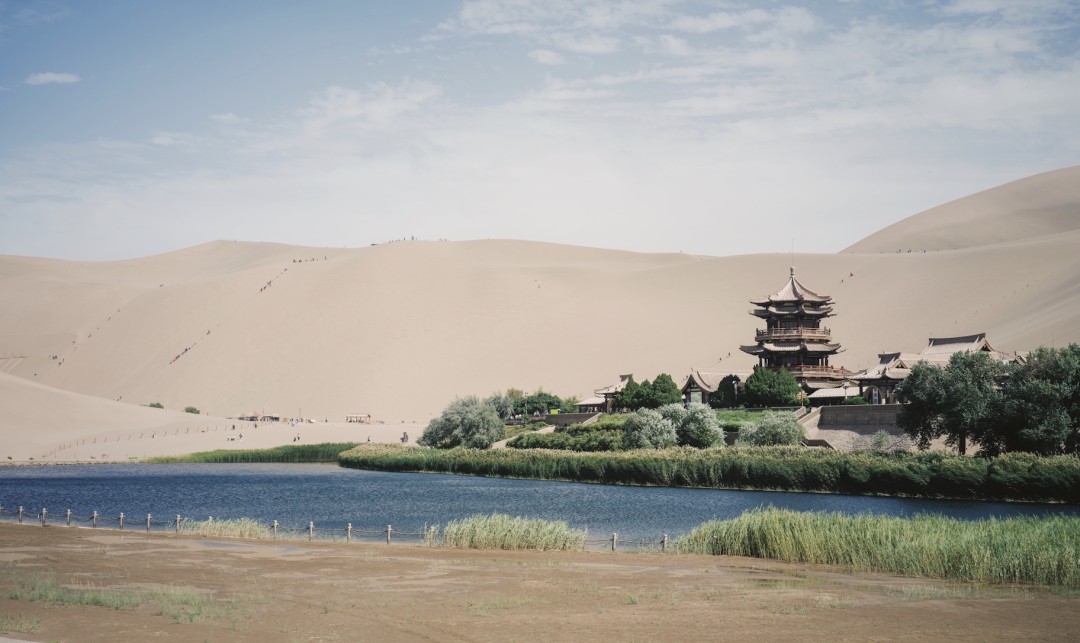
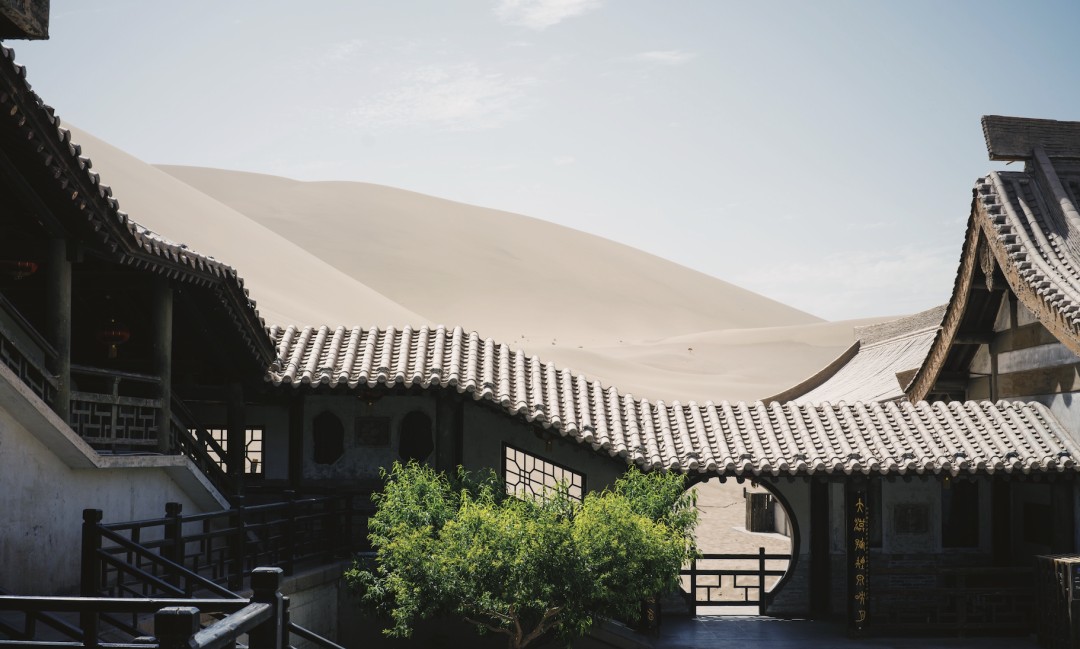
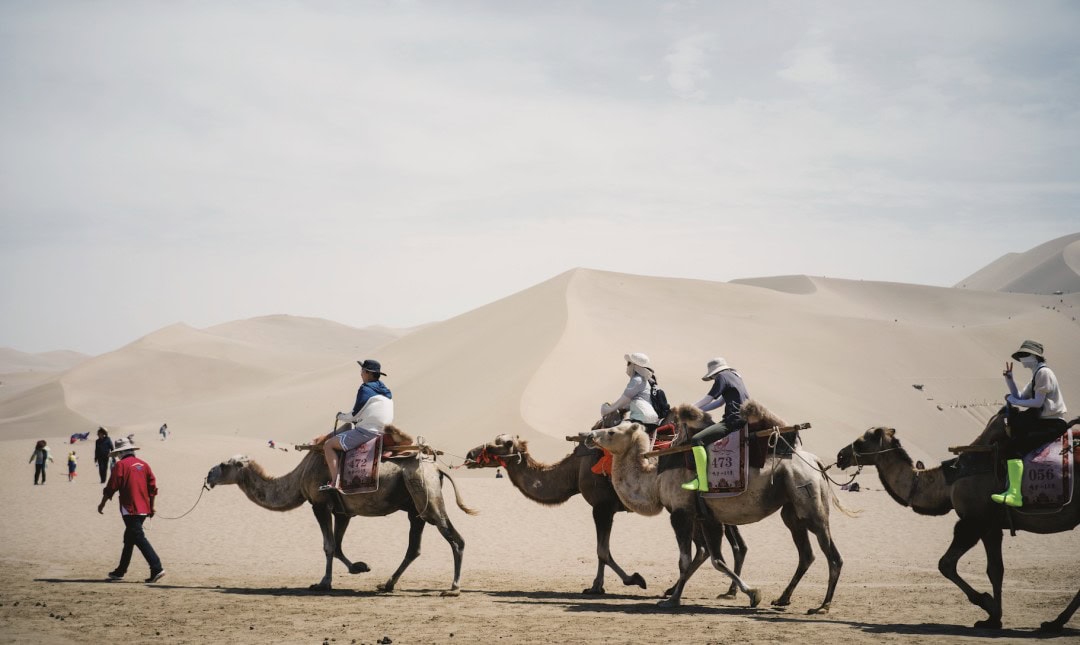
Our trip followed a 5-day 4-night itinerary. We gathered in Dunhuang on the first day and dispersed back home from Xining on the last day, covering both Gansu and Qinghai provinces and visiting destinations like Dunhuang, Dachaidan, Golmud, and Xining. This route also includes high-speed trains, but compared to the 6-hour journey, I truly preferred the leisurely pace of the 5 days and 4 nights.
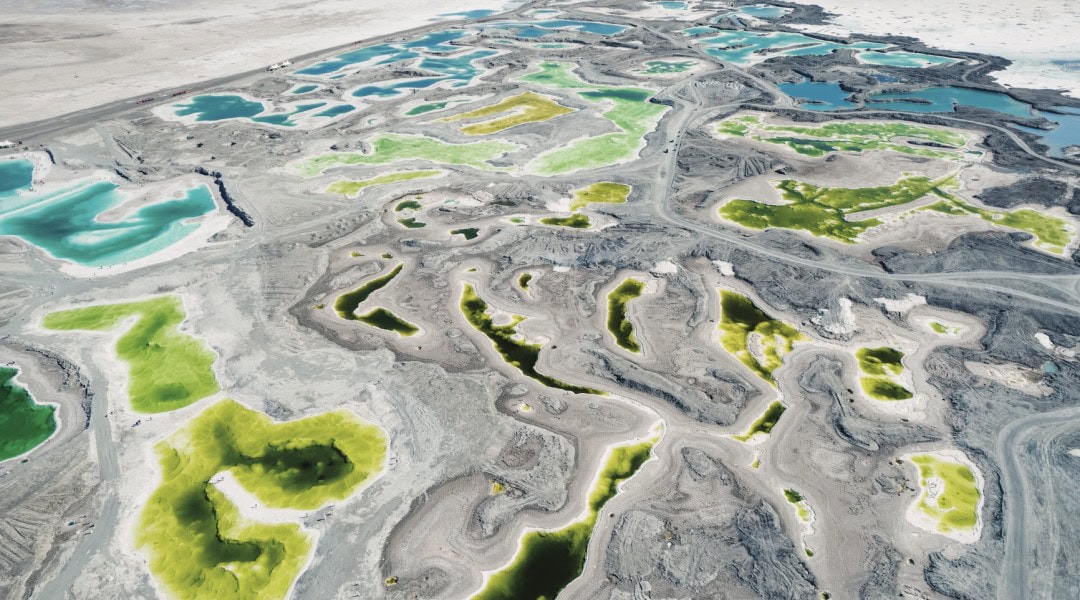
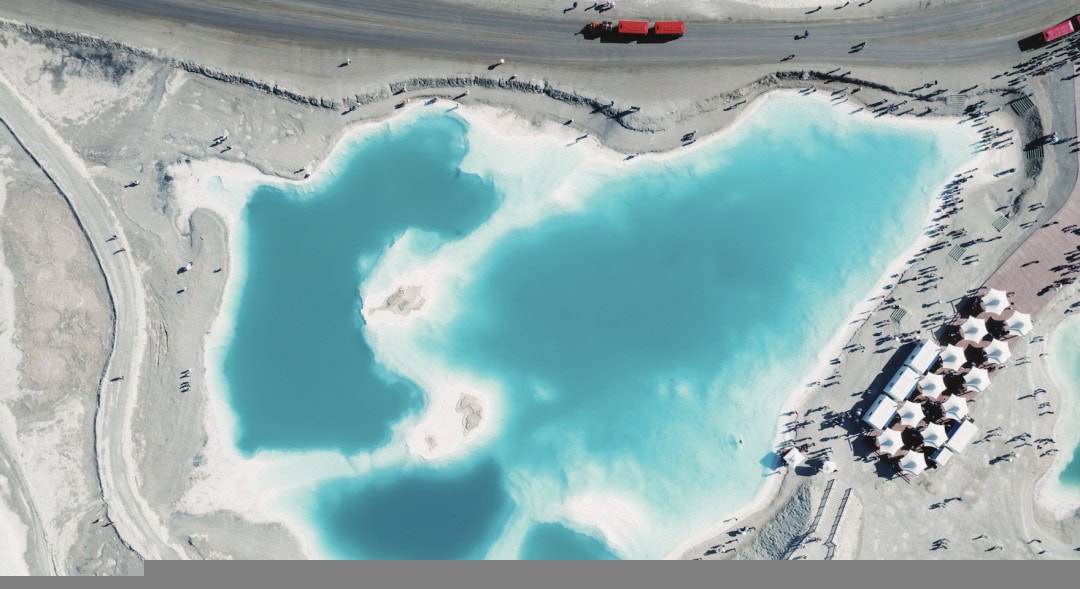
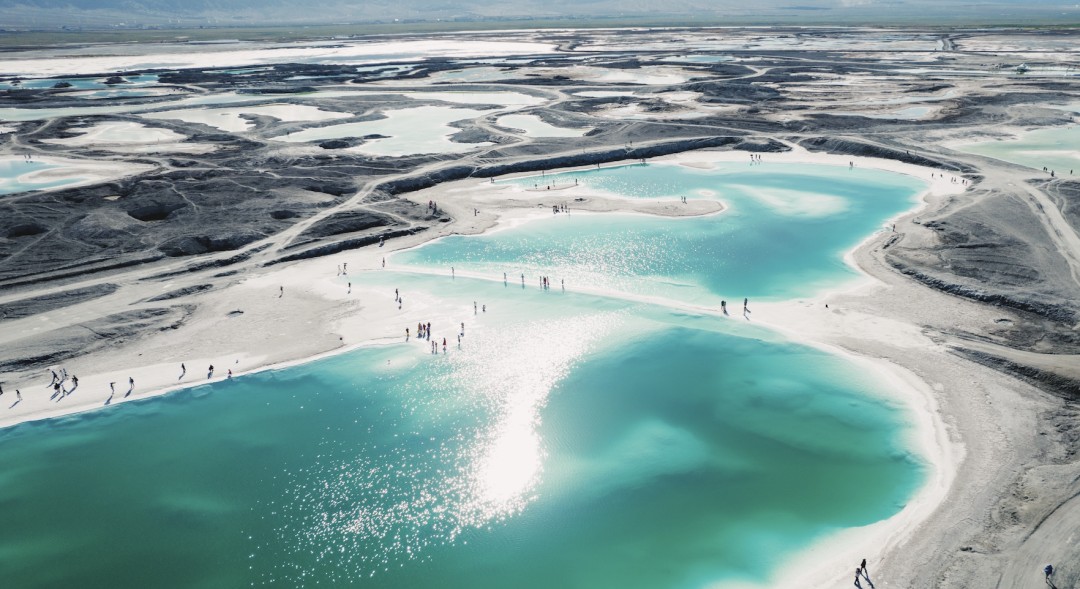
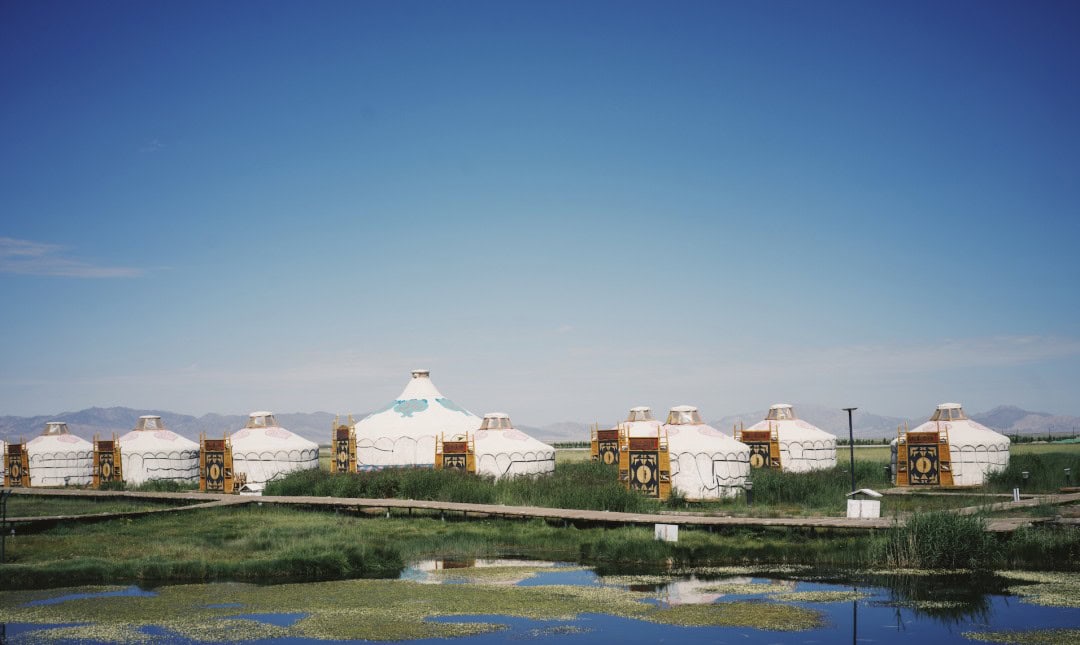
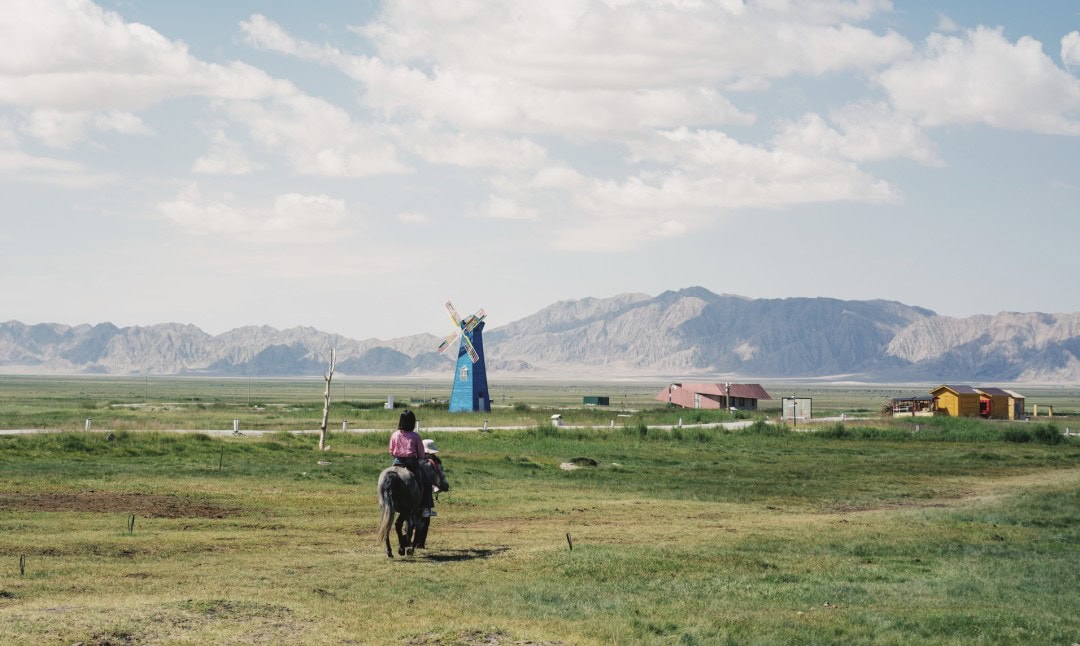
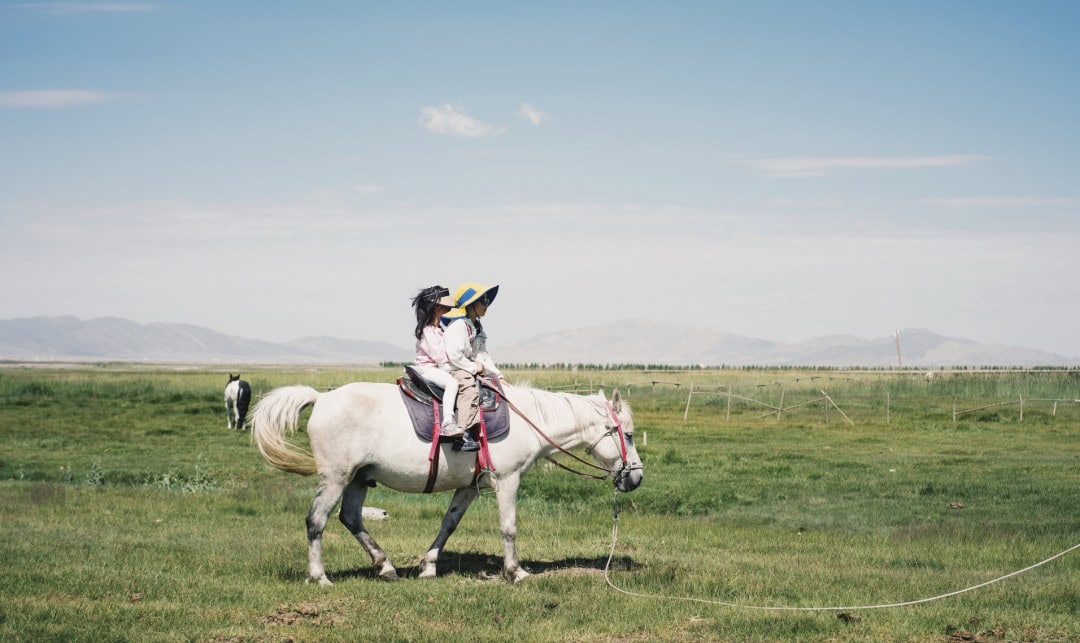
On our first day, we participated in a special desert dinner to welcome us. We ran on the sand dunes, enjoyed a campfire under the stars, and savored a grand feast against the backdrop of the evening glow, complete with music and dance performances. It was safe to say that this train knows how to entertain.
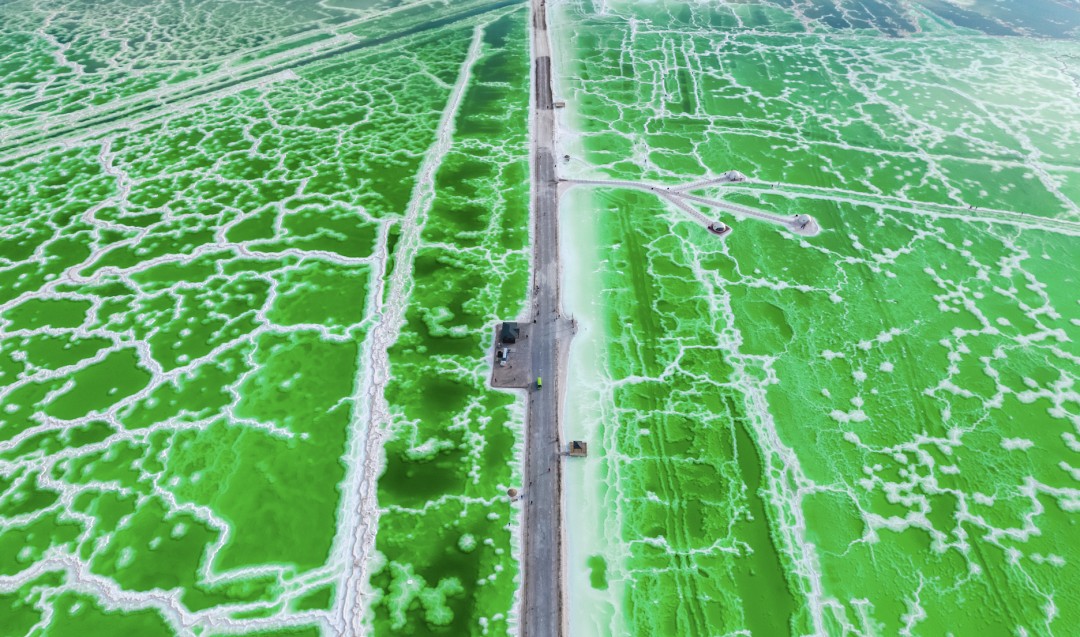
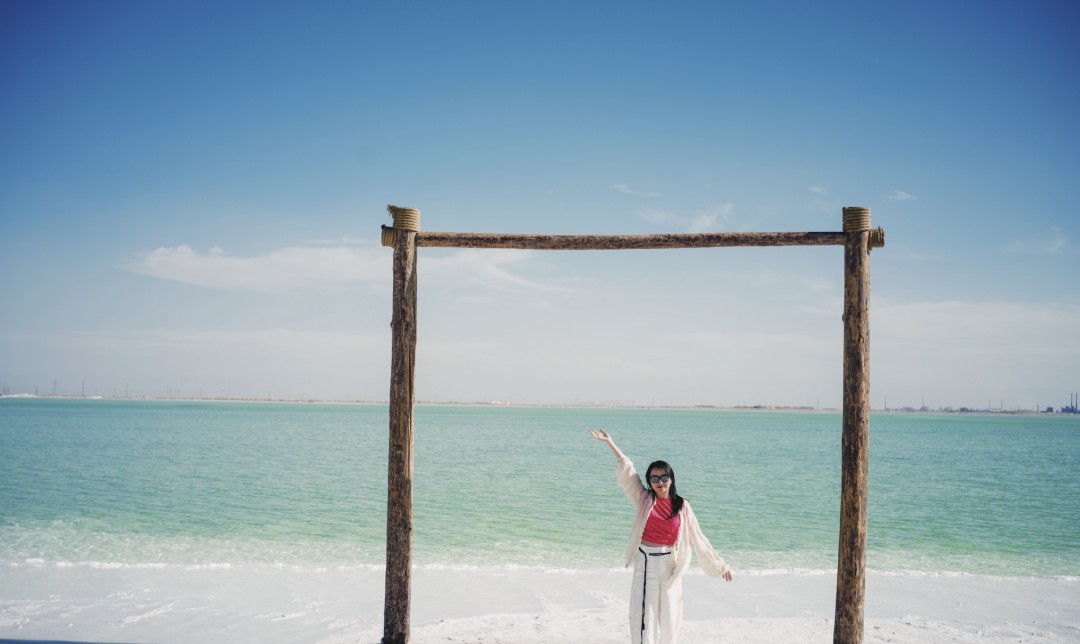
Travel is not solely about going somewhere; it is also not simply a vacation. Travel is a process, a discovery — realizing how fun and exciting the desert can be.
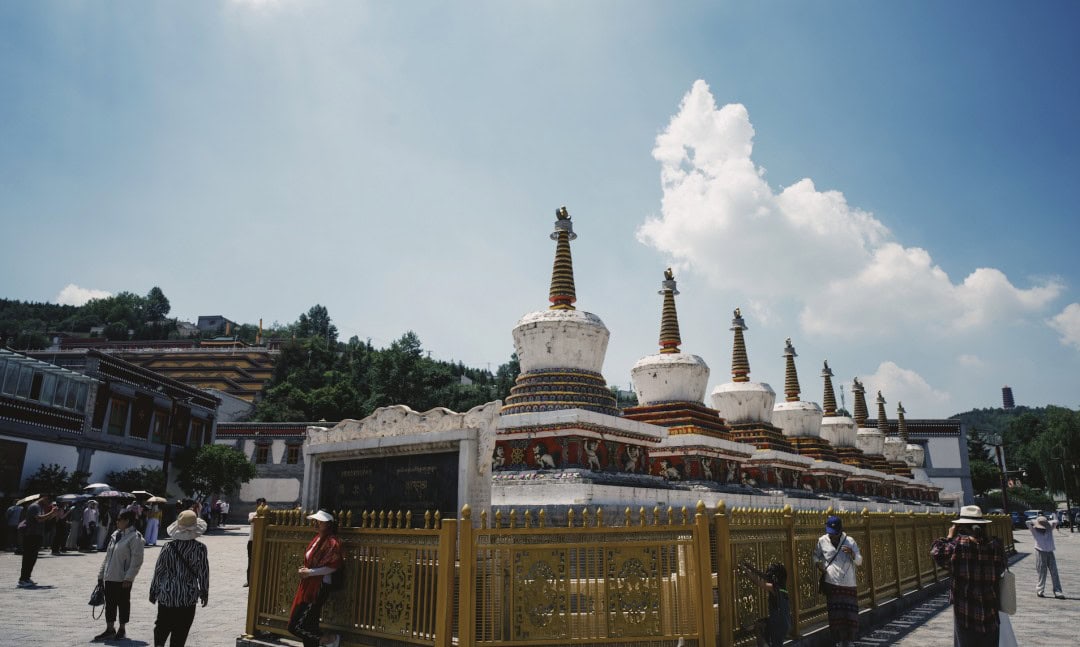
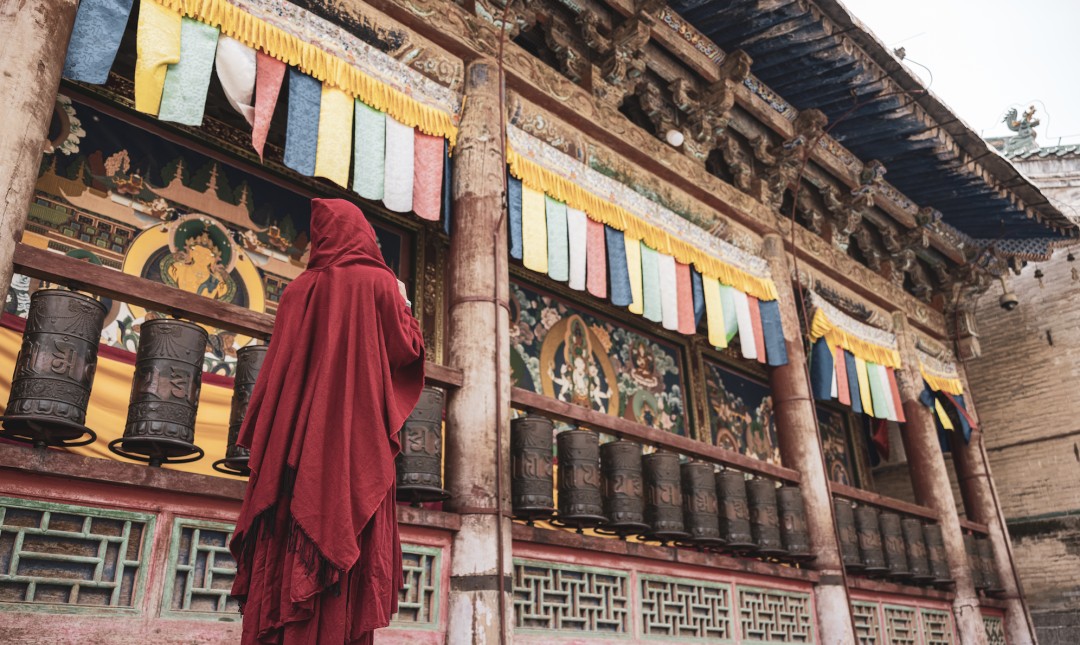
On the second day, we visited the Mogao Caves and Mingsha Mountain. Our itinerary at the Mogao Caves allowed us to see eight general caves and three special caves, with virtually no waiting times and even dedicated transport. I had previously visited the Mogao Caves, and I can confidently say that this journey was significantly more comfortable and enjoyable, especially with the guides providing excellent explanations at the special caves.
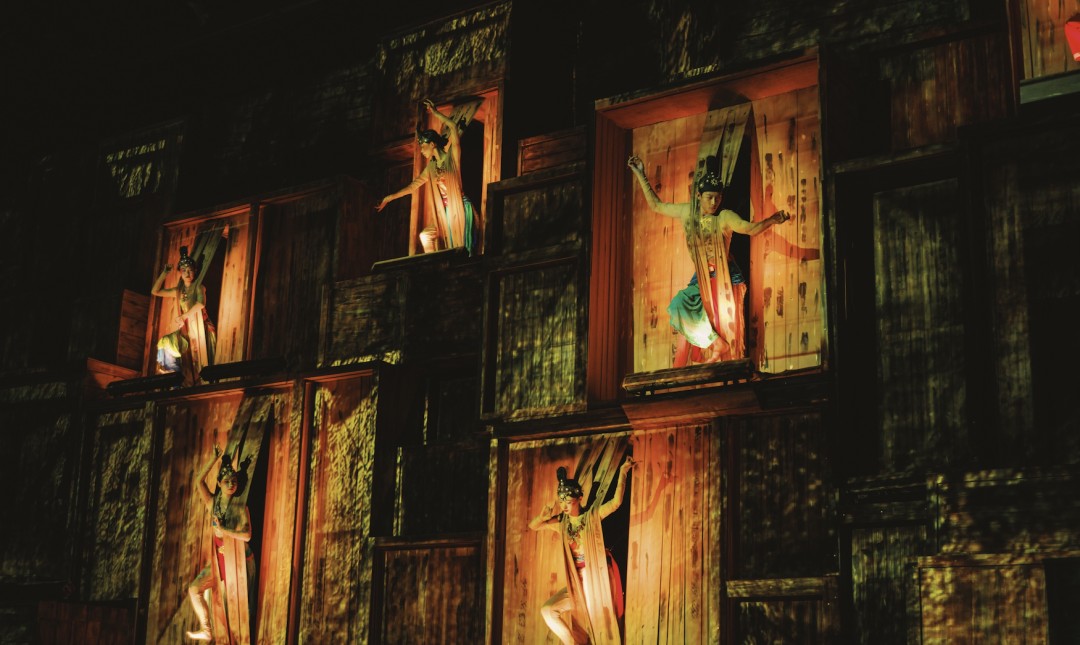
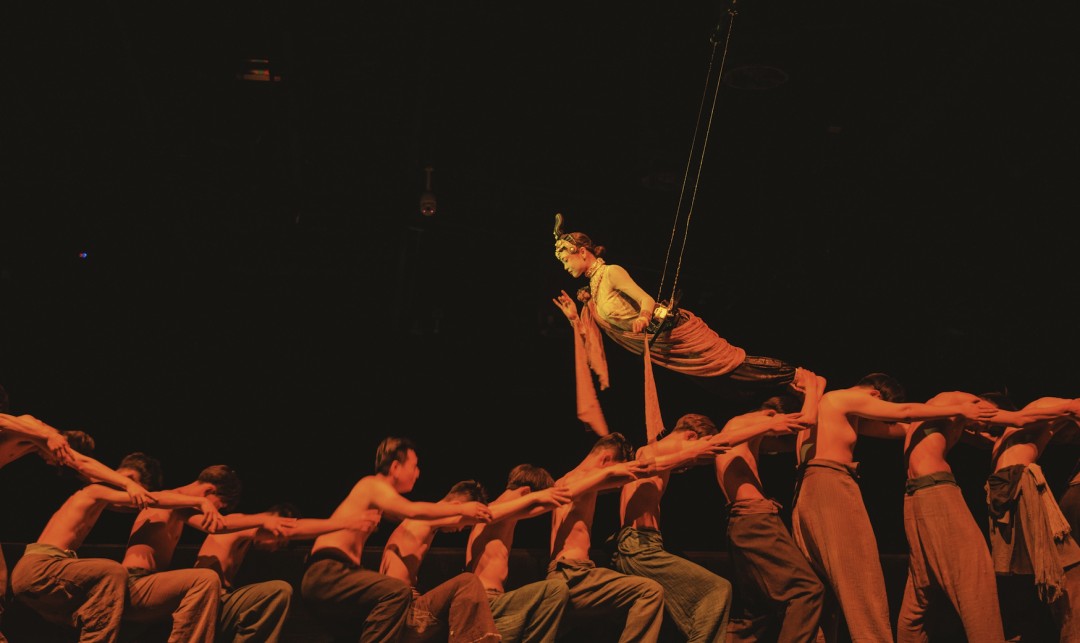
In the afternoon, we visited Crescent Moon Spring at Mingsha Mountain. The Silk Road Dream Train provides an exclusive indoor teahouse at Mingsha Mountain, ensuring our visit was relaxing.
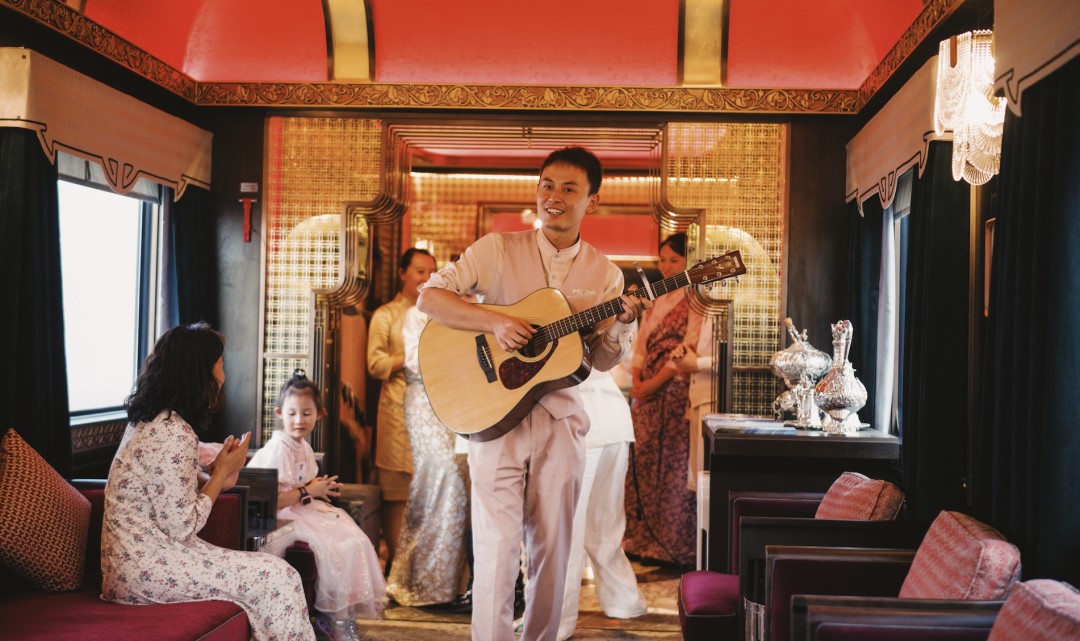
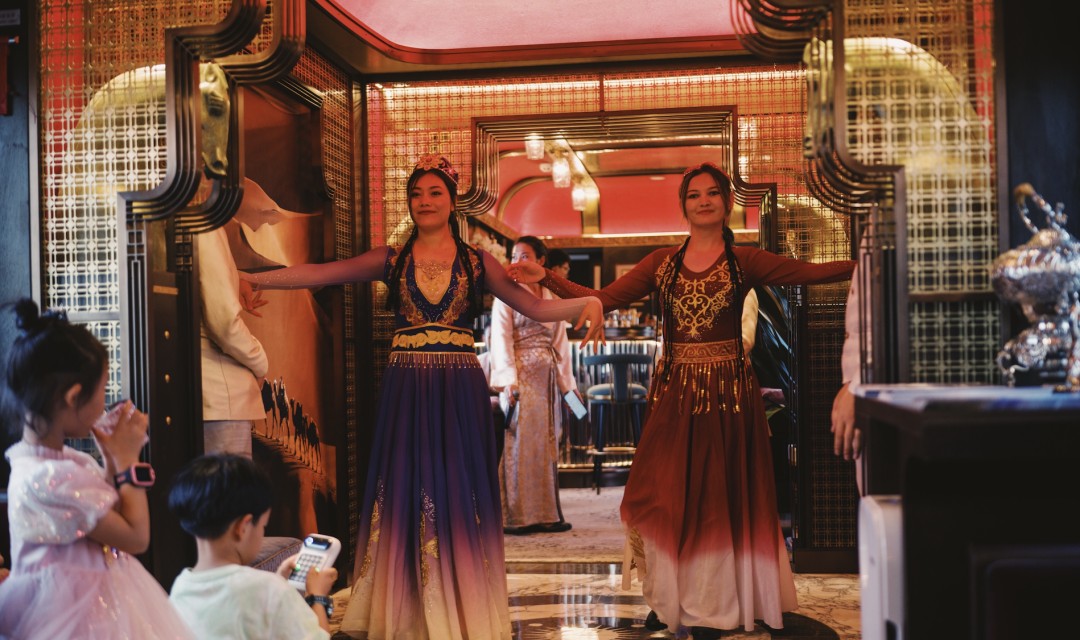
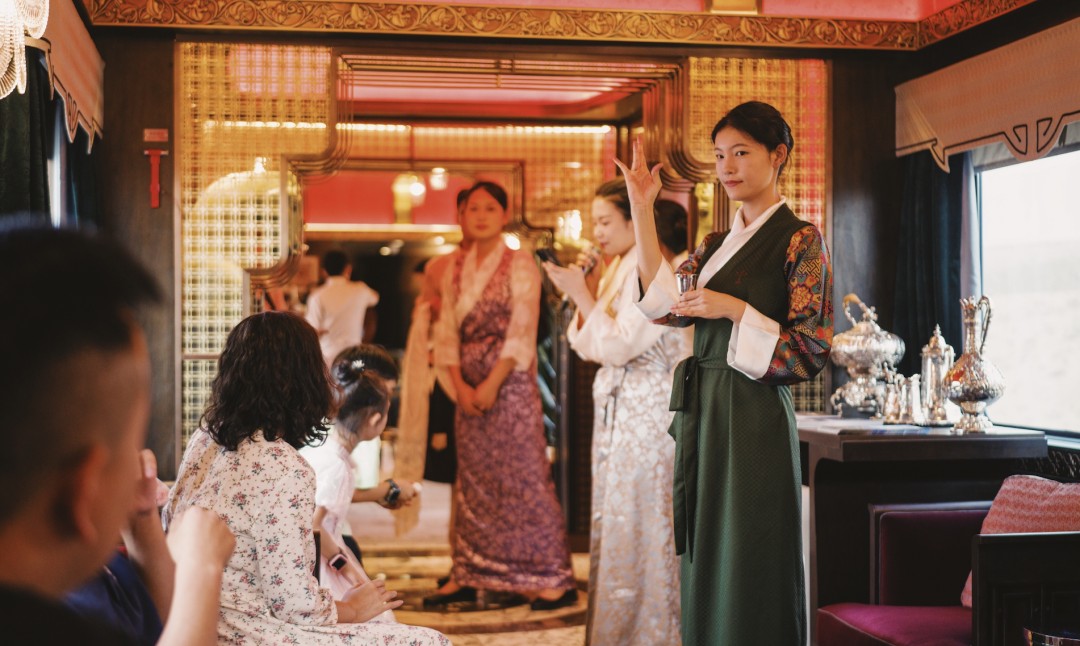
The third day we explored Dachaidan and Golmud. Dachaidan is primarily known for the Emerald Lake, an ideal location for photo opportunities due to its stunning beauty. During this leg of the journey, a travel photographer accompanied us to capture beautiful moments.
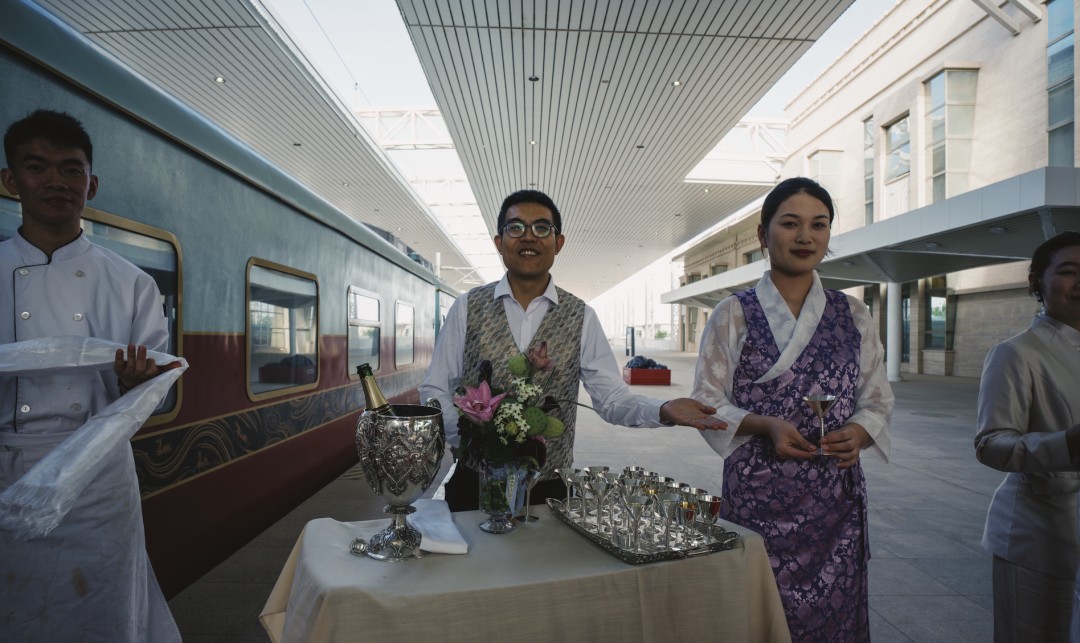
The Silk Road Dream Train has a collaborative campsite in Dachaidan offering tea breaks, barbecues, horseback riding, archery, and more. This is where my child had the most fun. It was their first time horseback riding.
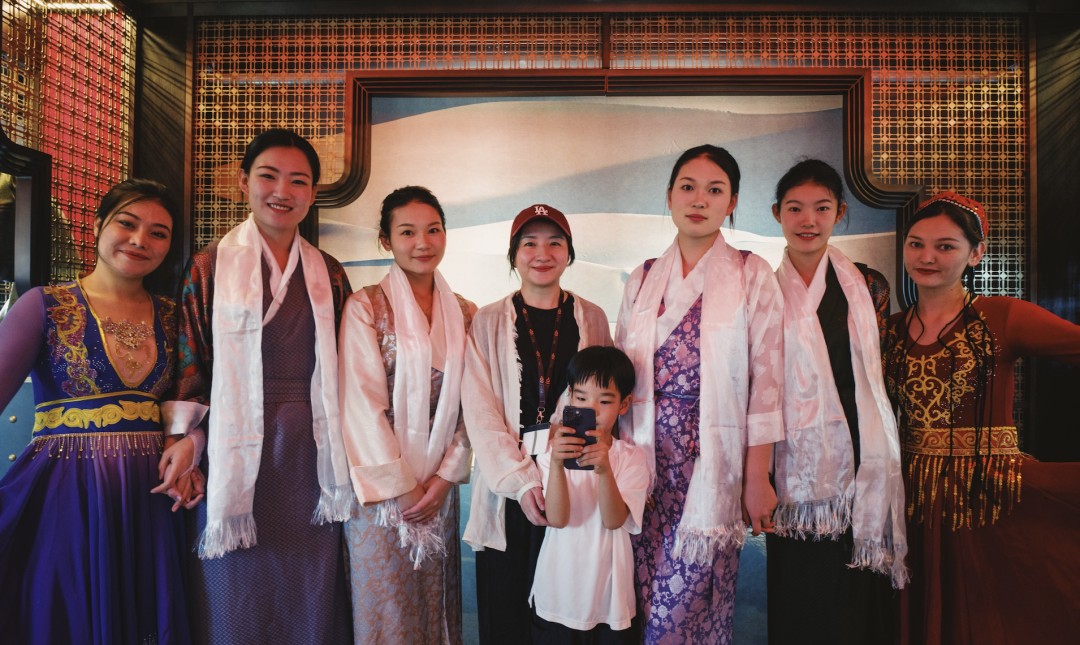
Golmud is the location of the Chaqin Salt Lake, the largest salt lake in China, renowned for its magnificent scale and rich resources. We had to fly a drone here; the aerial perspectives were incredible.
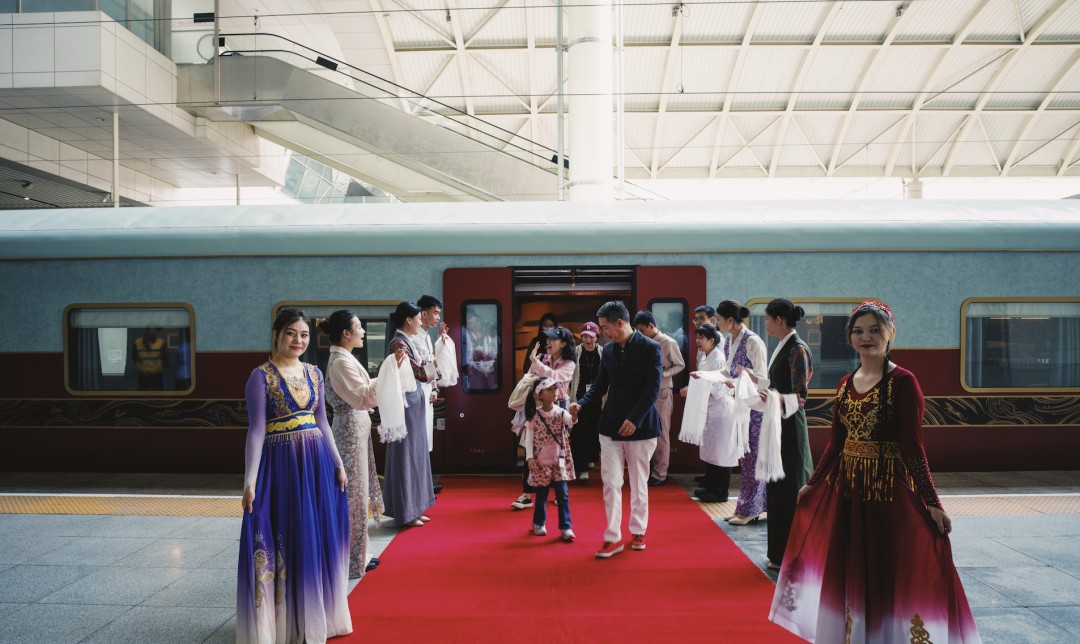
On the fourth day, we explored Xining, visiting the Ta’er Monastery, adhering to the Gelug school of Tibetan Buddhism, and engaging in Thangka art creation. The fifth day was left unplanned and included a transfer back to the airport.

Although the itinerary was packed, it felt leisurely overall. Each scenic spot brought new delights, and indeed, I had an exhilarating time.
People and Events Encountered

